-
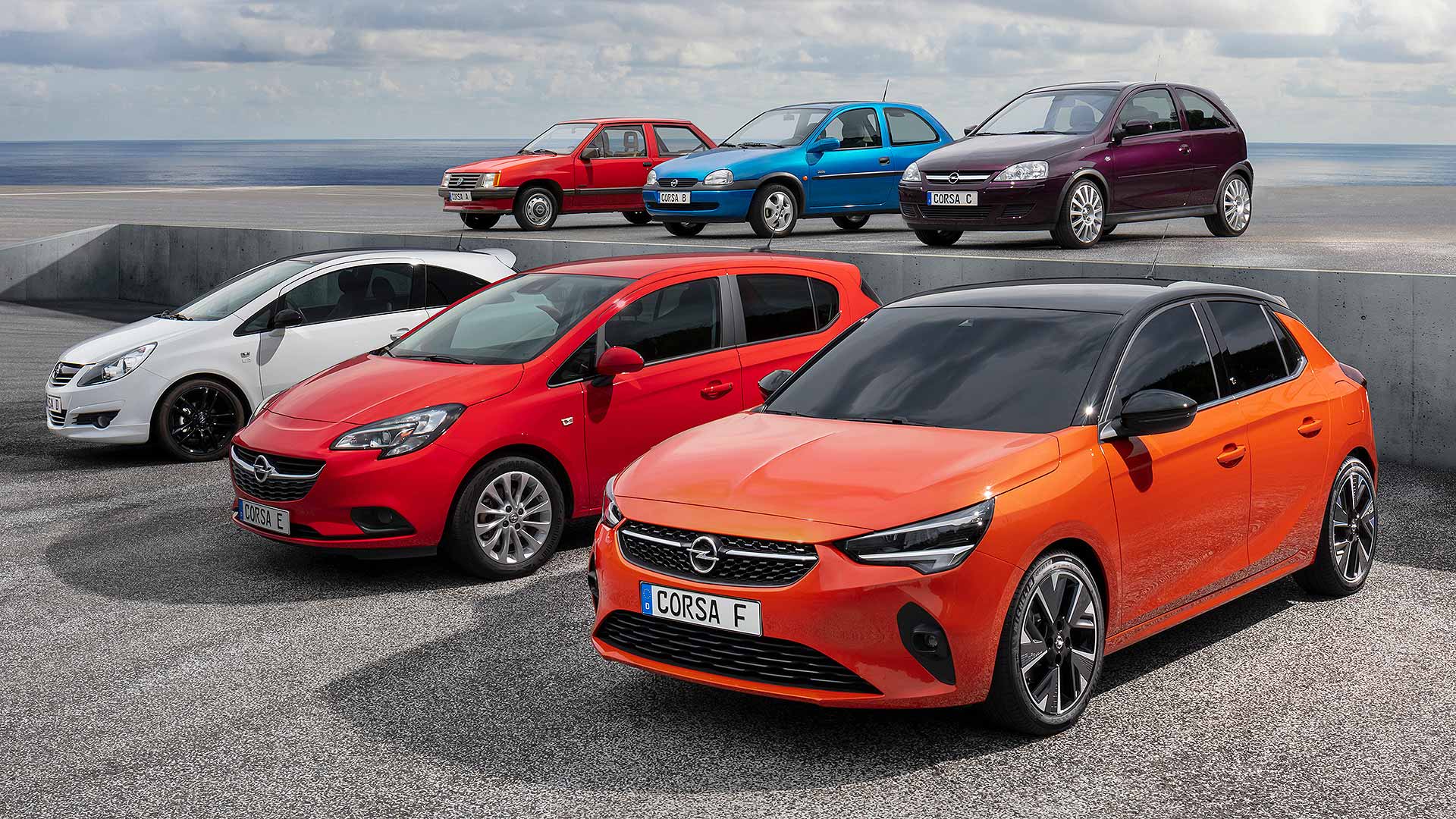
Four decades of Vauxhall superminis
© VauxhallVauxhall has released a special edition Corsa to celebrate four decades of its hugely successful supermini. Spanning six generations, the Corsa has become part of the motoring landscape. More than 2.8 million examples have been sold in the UK alone, with the Corsa frequently topping sales charts.
Strong youth appeal has seen countless Millennials and Generation Xers take their first tentative miles on the road behind the wheel of a Corsa.
With life said to begin at 40, we have taken a look back at the story of the Vauxhall Corsa.
-
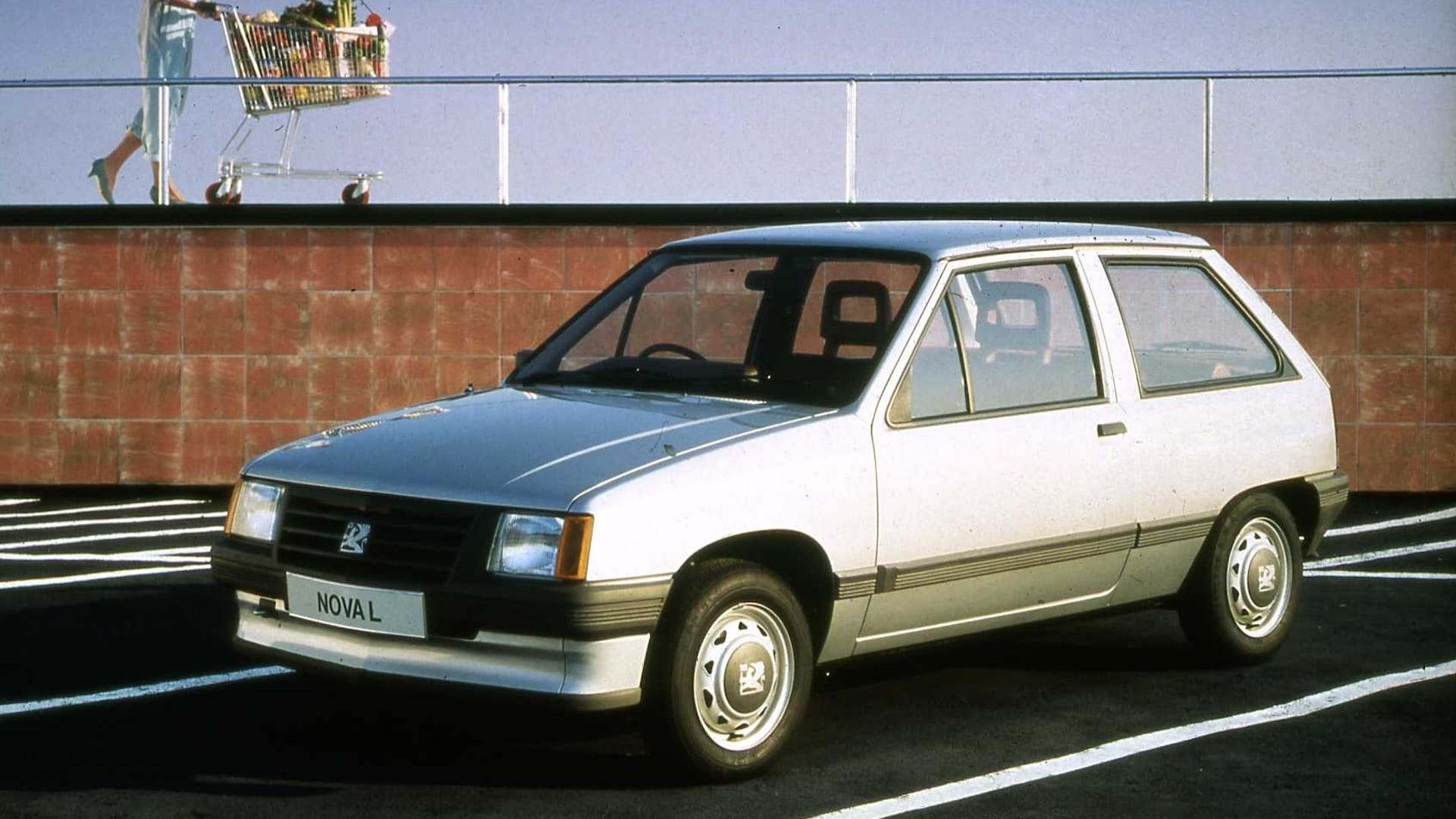
1982 Vauxhall Nova
© VauxhallThe Corsa tale begins with another name on its boot. Opel released the ‘Corsa A’ in 1982, with the all-new supermini built in Zaragoza, Spain. Initially, only France, Italy, and Spain received the new model, due to the importance of small cars to their markets.
When right-hand-drive versions appeared in April 1983, Vauxhall decided against using the Corsa name. It felt that describing a car as ‘coarser’ would not do much to help sales, even if the new model was a vast improvement over the previous Chevette.
A row with the TGWU union saw threats to blockade the import of new Novas, with workers unhappy that the new car wasn’t built in the UK.
-
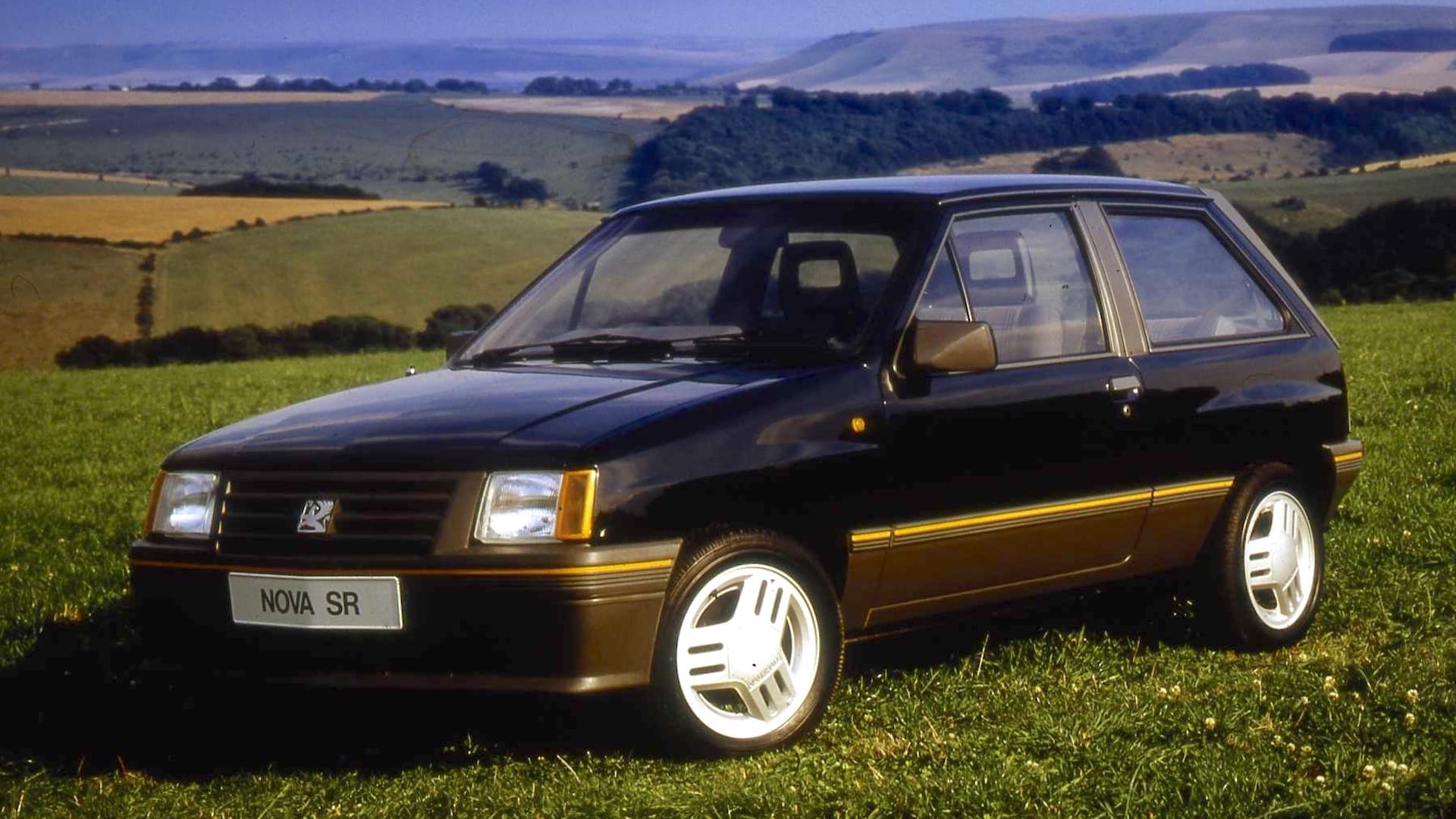
1982 Vauxhall Nova SR
© VauxhallWhen the Nova arrived on UK shores, it was a major step forward compared to the Chevette it replaced. Front-wheel drive created more interior space, while the styling featured bold flared wheelarches and a relatively low drag coefficient.
The Nova hatchback was initially limited to the three-door version, with a five-door entering production in 1984. Early engine options consisted of four-cylinder petrol units, ranging from a 45hp 1.0-litre to a 55hp 1.2 and 70hp 1.3.
A four-speed manual gearbox was standard on the 1.0 and 1.2, with the option of five speeds on the 1.3. The sportier SR model seen here featured tartan interior trim.
-
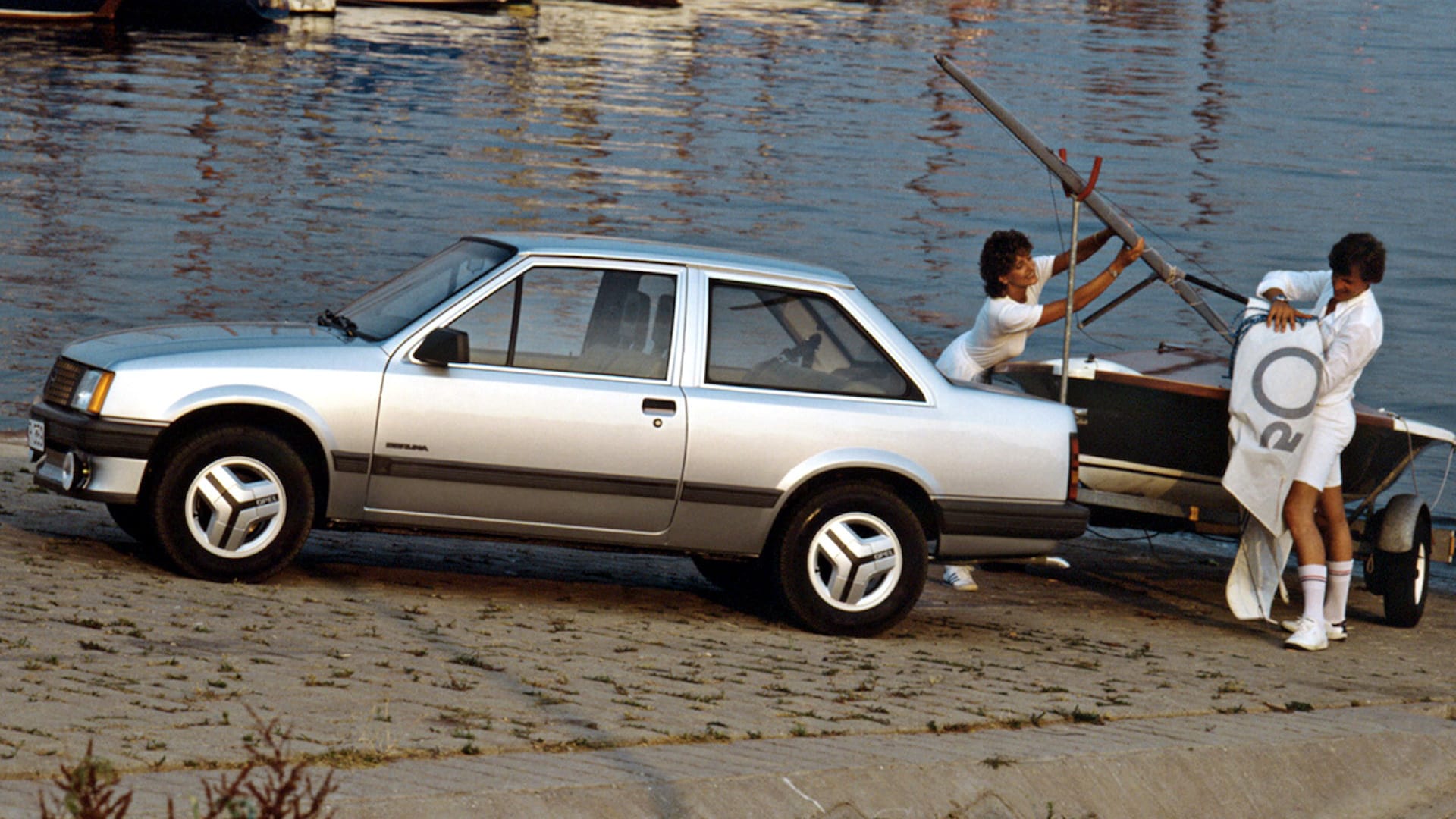
1982 Vauxhall Nova Saloon
© VauxhallAlong with the hatchback, the Nova was also sold in two-door (and later four-door) saloon versions. These were intended to appeal to customers who preferred the traditional three-box shape, rather than a modern hatchback.
A facelift in 1988 saw the saloon models dropped by Opel in Germany, due to a lack of demand. This coincided with an updated exterior design, and the introduction of a new Isuzu-supplied turbodiesel engine option.
-
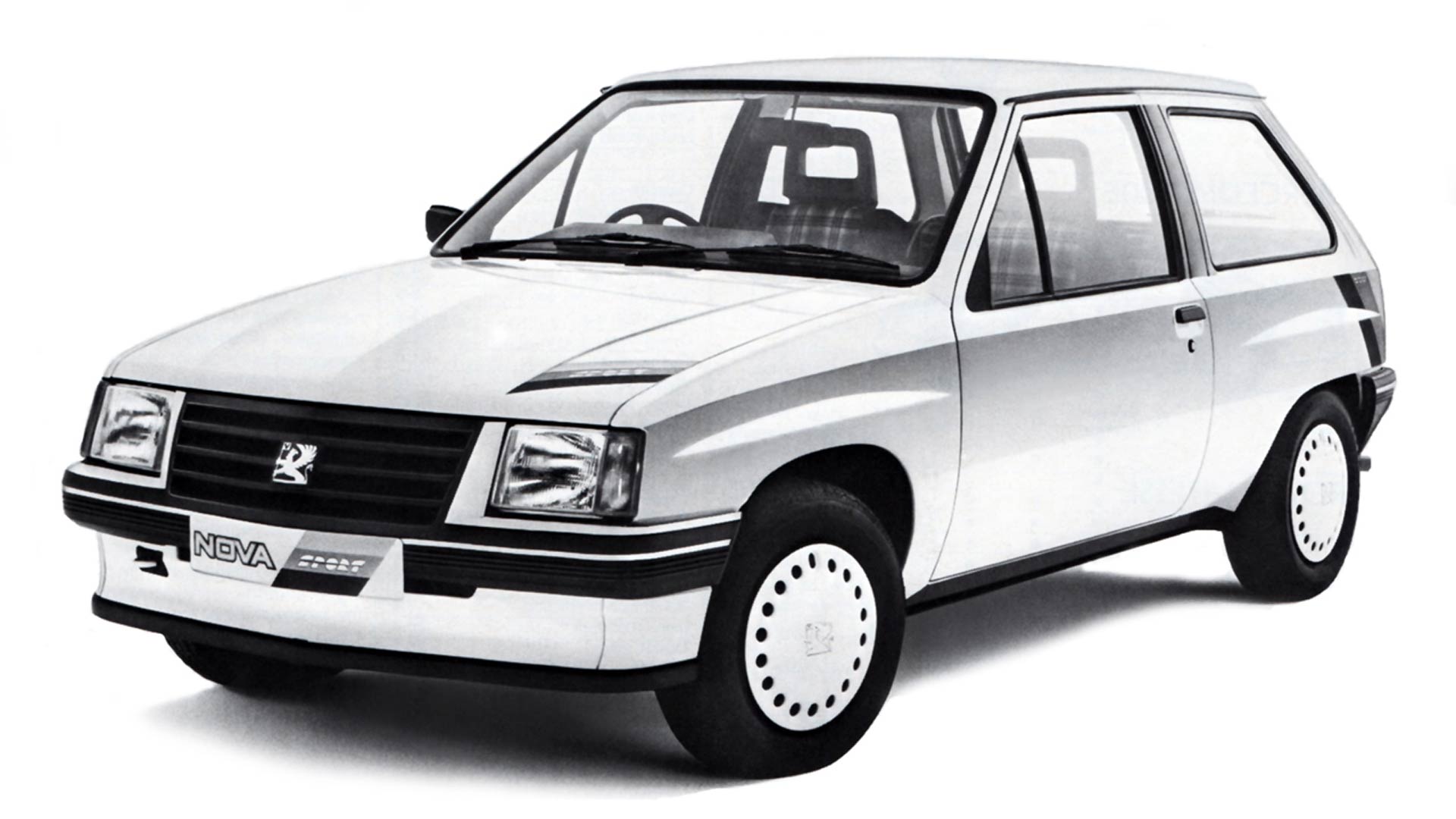
1985 Vauxhall Nova Sport
© VauxhallVauxhall sold countless Nova special editions during its 10-year lifespan but the rarest, and most desirable, was arguably the 1985 Sport. It was built to homologate the Nova for use in the sub-1.3-litre category of the British Open Rally Championship, with 500 examples produced.
A dealer-fitted pack added a pair of Weber carburettors, a new camshaft and an Irmscher exhaust manifold. This pushed the standard 1.3-litre engine to 87hp and 75lb ft of torque. Firmer suspension was fitted at the factory, with rear seatbelts and even the passenger wing mirror left off to save weight.
All examples were painted white, with a set of rally-inspired decals added. Today, the Nova Sport is incredibly rare, with fewer than 40 still on the road.
-
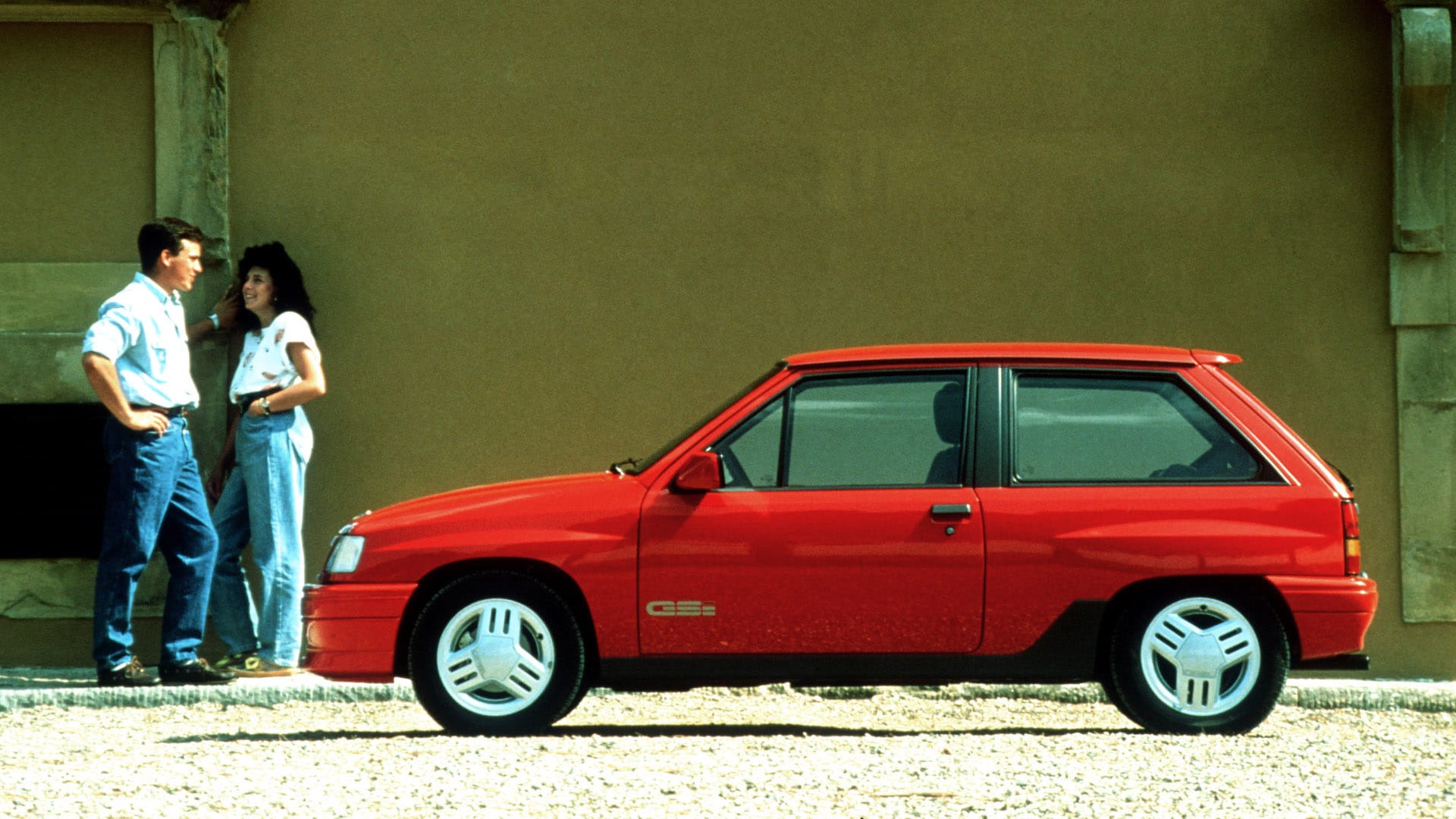
1990 Vauxhall Nova GSi
© VauxhallAnother comprehensive facelift came in 1990, with the Nova gaining clear indicators, new bumpers and a revised front grille. This included updates for the sportiest mass-produced Nova, now badged GSi instead of GTE for the UK market.
With 100hp, the GSi was capable of accelerating from 0-62mph in less than nine seconds, with a top speed of 116mph. It would become a darling of the boy racer (and joyriding) scenes, with surviving numbers severely limited as a result.
The Nova would soldier on until 1993, by which point almost 500,000 had found homes in the UK. However, the boxy design now looked ancient compared to modern rivals, with a much-needed replacement on the way.
-
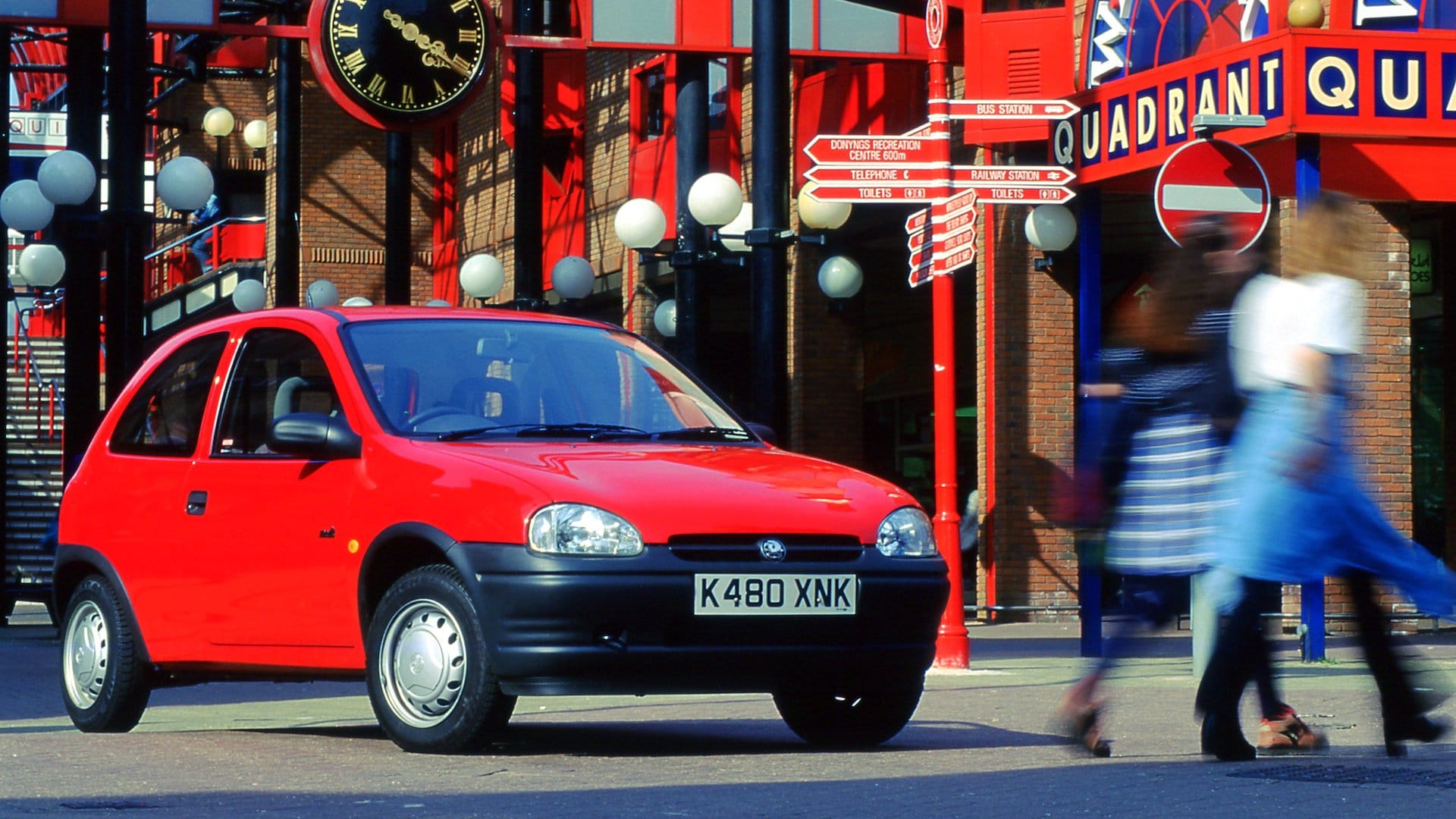
1993 Vauxhall Corsa
© VauxhallVauxhall finally relented in 1993, adopting the Corsa name in the UK for its second-generation supermini. With revolutionary styling outside, the ‘Corsa B’ was bigger in all dimensions, offering a more spacious cabin compared to the old Nova.
Safety was also improved, with side-impact bars as standard, plus a driver’s airbag and ABS braking on the options list. Buyers could pick between three- and five-door hatchbacks, with no saloons for European buyers.
A choice of 1.2-, 1.4- and 1.6-litre petrol engines were offered at launch, along with 1.5-litre diesel and turbo-diesels. Most came with a five-speed manual gearbox, although the old four-speed unit persisted for a while.
-
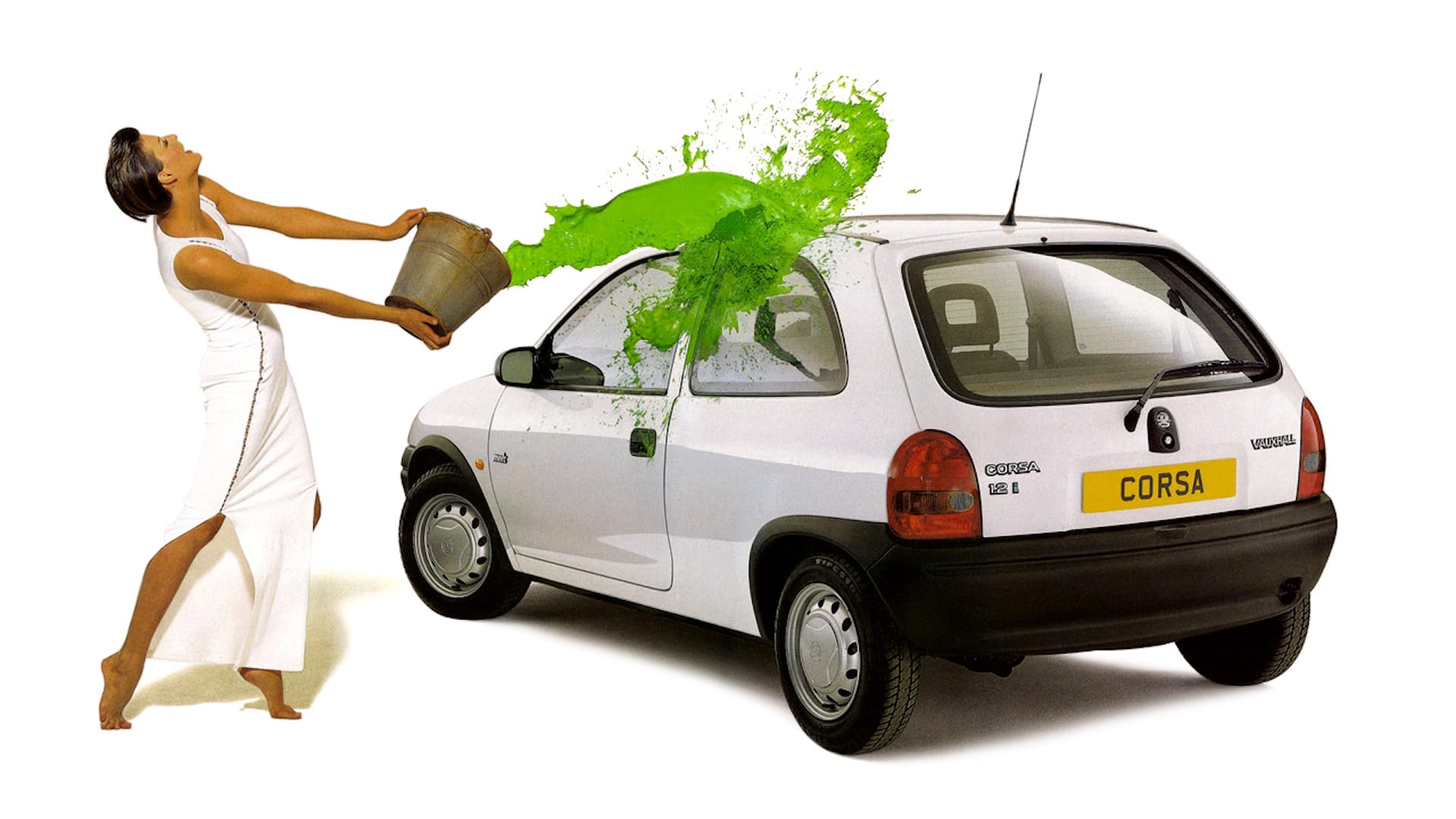
1993 Vauxhall Corsa
© VauxhallVauxhall made a major effort to promote the new Corsa. This centred upon an advertising campaign featuring supermodels such as Naomi Campbell, Kate Moss, Linda Evangelista and Christy Turlington.
Despite the exotic marketing strategy, journalists found the Corsa to be a little more ordinary underneath. Although spacious and comfortable, the driving experience lagged behind the contemporary Ford Fiesta.
-
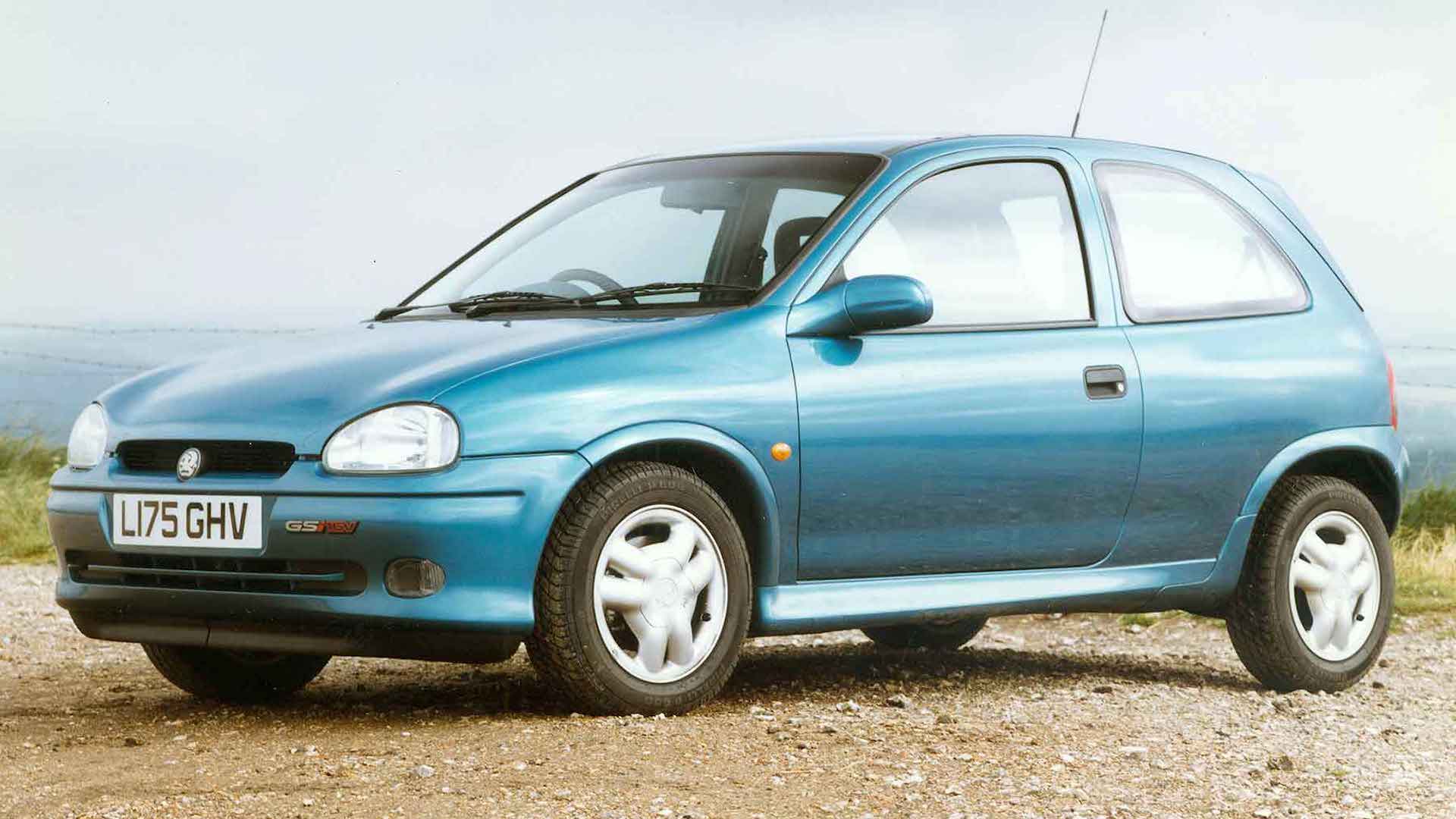
1993 Corsa GSi 1.6 16v
© VauxhallAt the Corsa’s launch, Vauxhall revealed a performance model wearing the GSi badge. Powered by a 16-valve 1.6-litre petrol engine producing 105hp, the GSi could sprint to 60mph in 9.2 seconds, plus a 121mph top speed.
A five-speed manual gearbox was standard, along with sportier suspension, bigger brakes and wider tyres. Body-coloured bumpers and three-spoke alloy wheels completed the GSi makeover.
Despite this effort, the Corsa GSi failed to appeal to enthusiasts and Vauxhall would drop the model by the end of 1994.
-
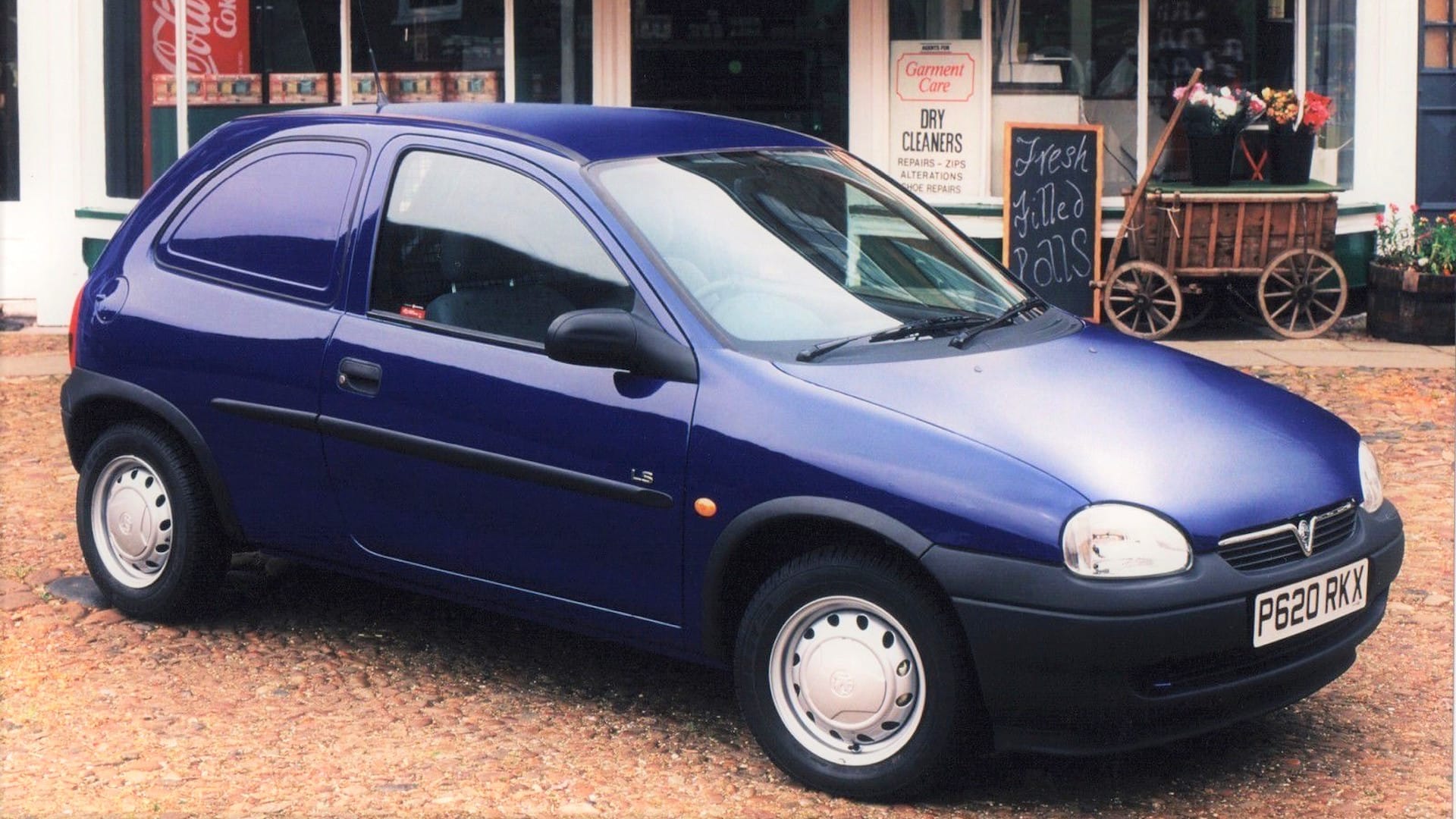
1994 Vauxhall Corsavan
© VauxhallContinuing a trend started with the Nova, Vauxhall introduced the Corsavan in 1994. It offered small-scale practicality, making it perfect for city couriers.
Fleet buyers could pick between a 1.4-litre petrol engine or a 1.7 diesel. The success of the Corsavan saw it become a staple of the range.
-
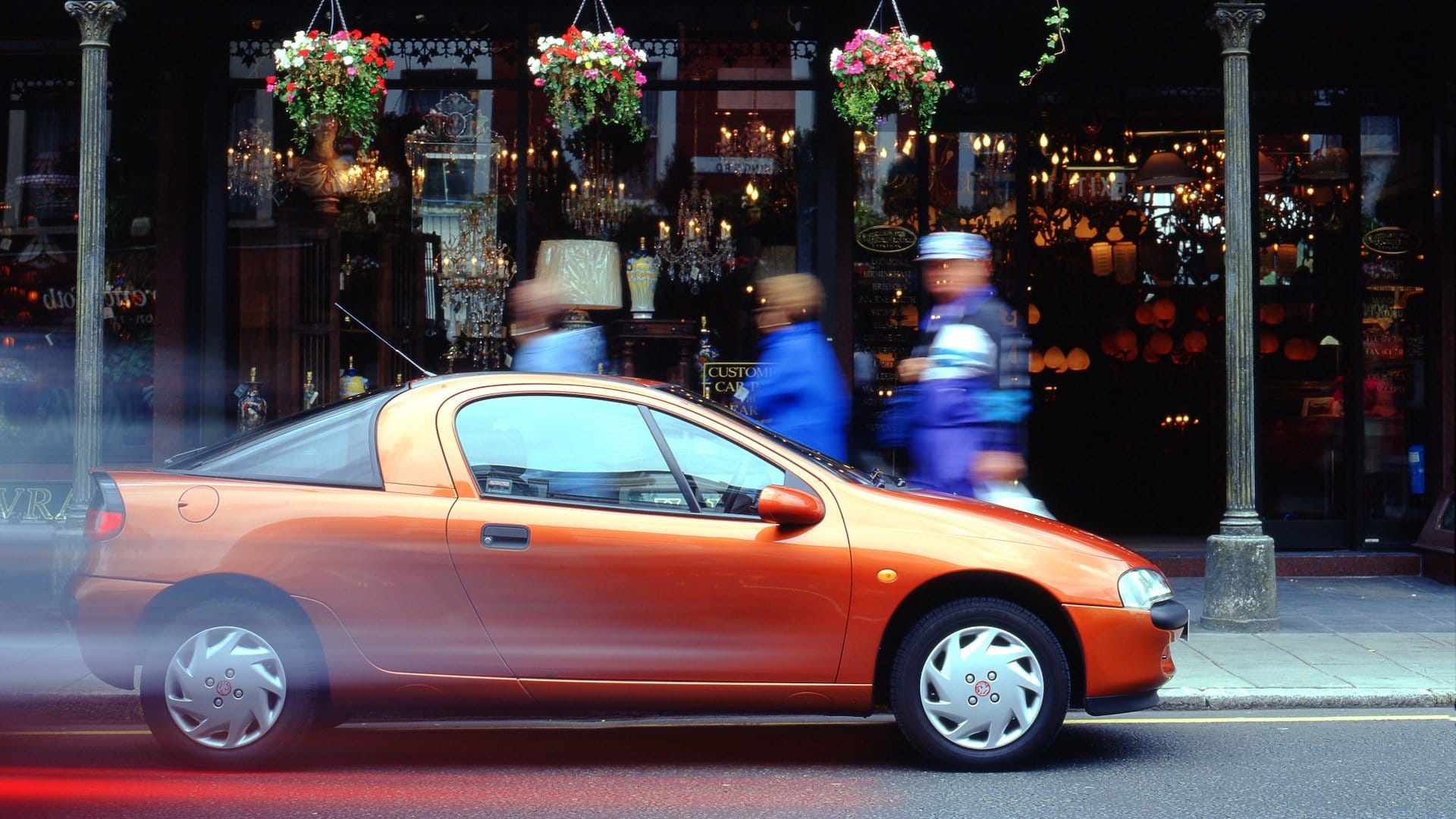
1994 Vauxhall Tigra
© VauxhallThe Corsa witnessed another spin-off in 1994, with the launch of the Tigra coupe. Although it shared no body panels, and gained a bespoke interior layout, underneath it was still a Corsa.
A choice of 1.4-litre and 1.6 petrol engines were taken from the Corsa, with Lotus tuning the suspension. However, the Tigra weighed 150kg more than equivalent Corsa, denting its performance.
Production continued until 2001, with more than 250,000 examples sold around the world.
-
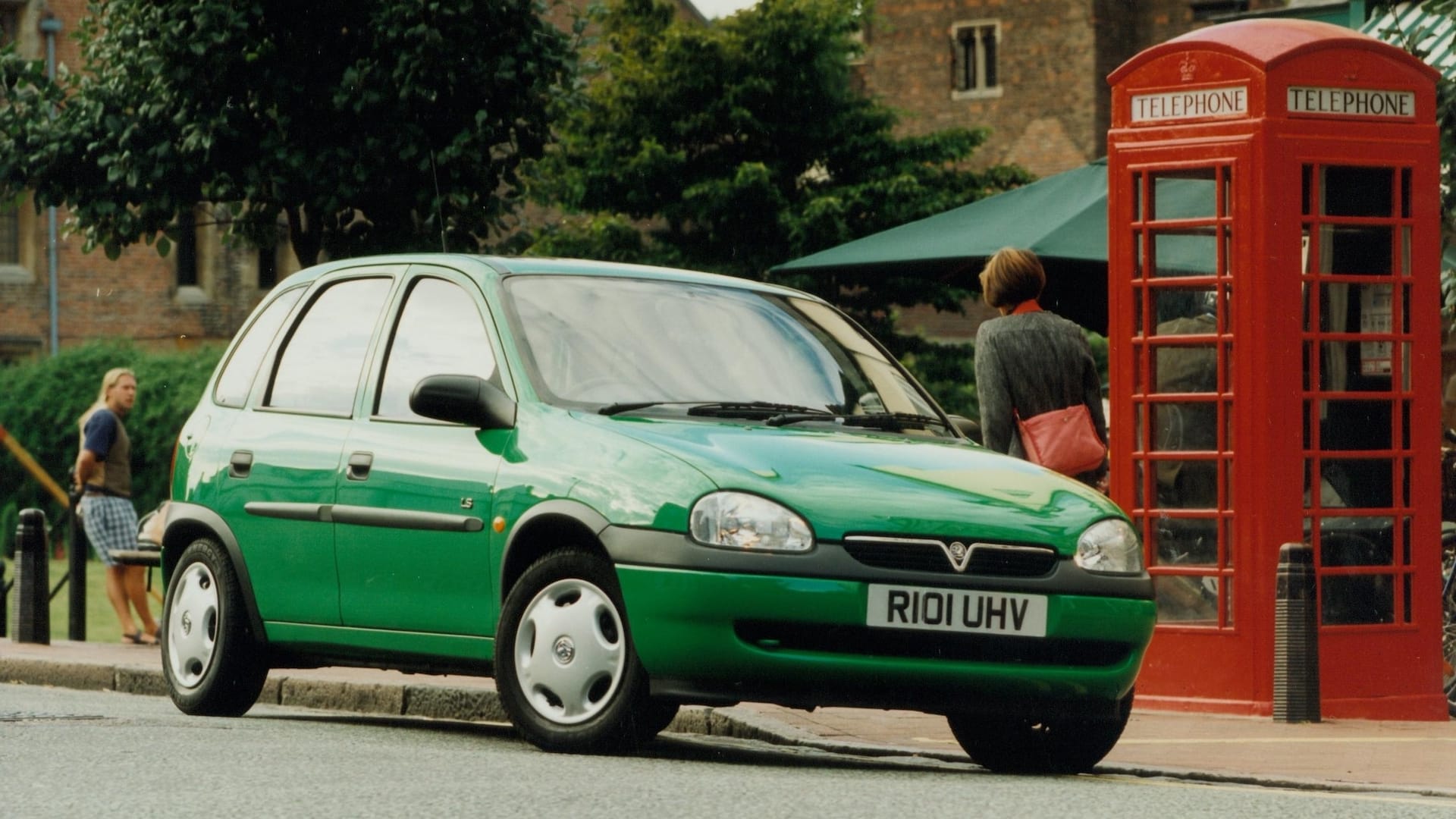
1997 Vauxhall Corsa
© VauxhallVauxhall moved to address earlier criticism of the Corsa with the release of a facelifted model in 1997. As with the Tigra, Lotus paid attention to the suspension, helping add an extra degree of driving involvement.
Changes to the exterior styling were minimal, with a V-shaped Vauxhall front grille as the biggest addition. A new 1.0-litre three-cylinder petrol engine, and a four-cylinder 1.2, were also added in 1997.
As with the Nova, multiple special editions of the Corsa were sold, including the 1999 ‘.com’ model. Joan Tabner became the first person to buy a brand new car directly over the internet, purchasing a new Corsa .com on 1 November 1999.
-
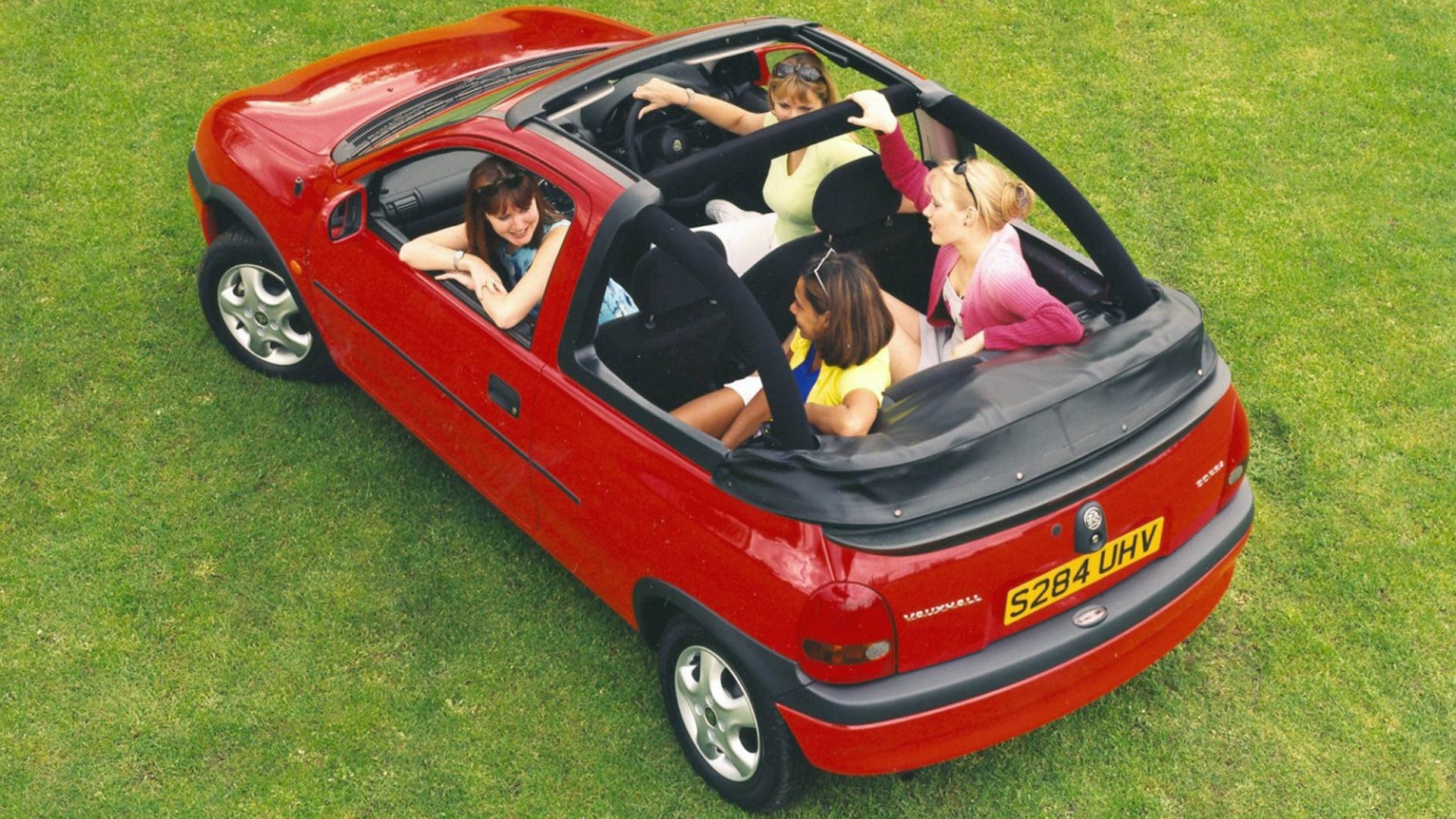
1998 Vauxhall Corsa Cabriolet
© VauxhallA joint venture between Vauxhall and a group of UK dealerships resulted in the special edition Corsa Cabriolet. Using the three-door model as a base, the Corsa Cabriolet featured a large targa panel at the front, with a folding fabric hood behind the B-pillar.
The folding roof robbed the Cabriolet of its boot space, but the Corsa did remain a full four-seater. Priced from £11,845, only 100 examples were sold between 1998 and 1999.
Vauxhall called time on production of the Corsa B in 2000, with more than 600,000 cars sold in the UK.
-
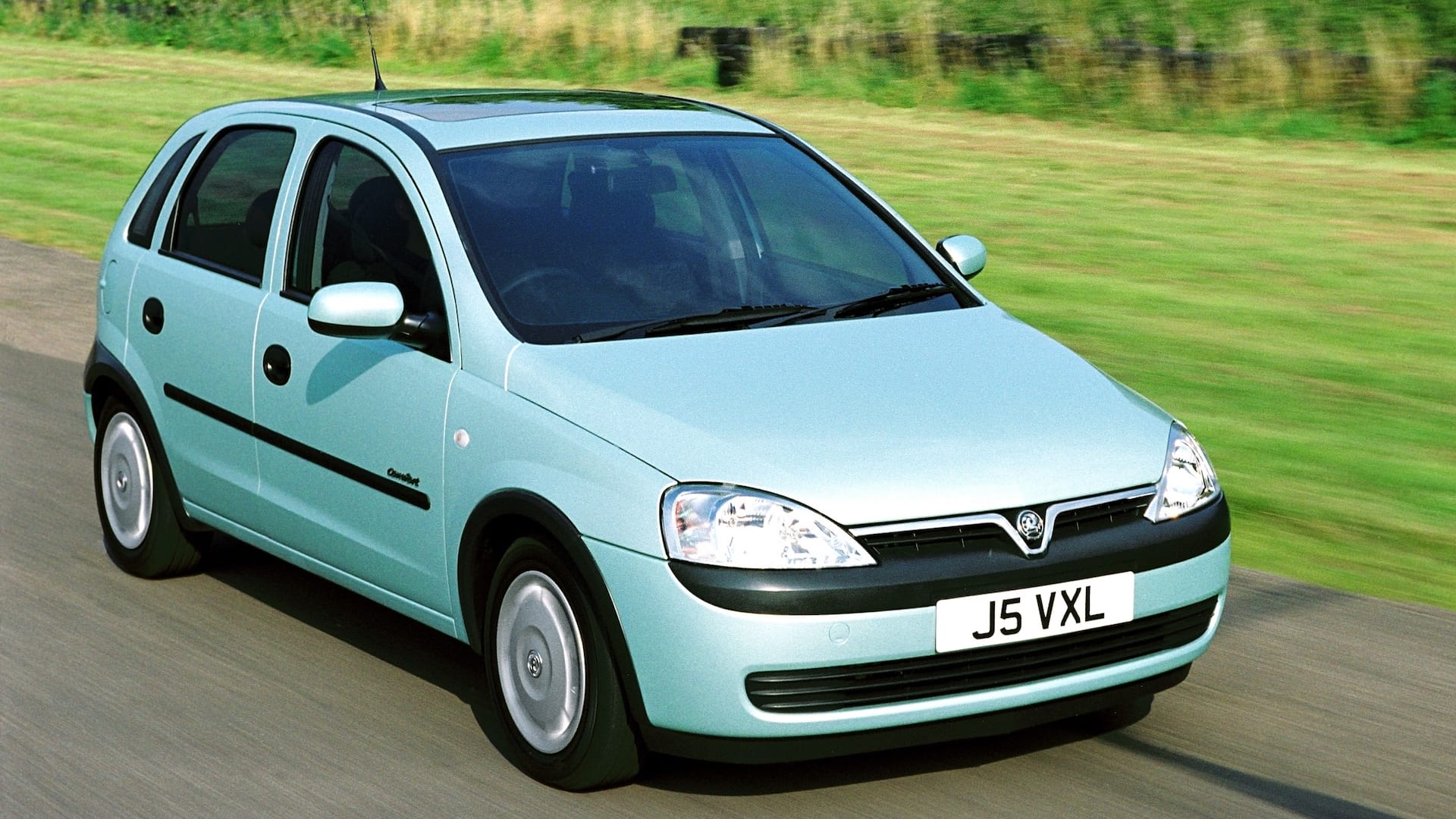
2000 Vauxhall Corsa
© VauxhallGiven that the previous-generation Corsa’s styling was one of its key selling points, General Motors chose an evolutionary design for the new 2000 model. Indeed, the car had the same designer: Hideo Kodoma.
A longer wheelbase meant both the three- and five-door hatchbacks had the interior space to compete with rivals such as the Ford Fiesta and Skoda Fabia. The body was fully galvanised for the first time, with new safety equipment resolving the poor Euro NCAP score of the old car.
-
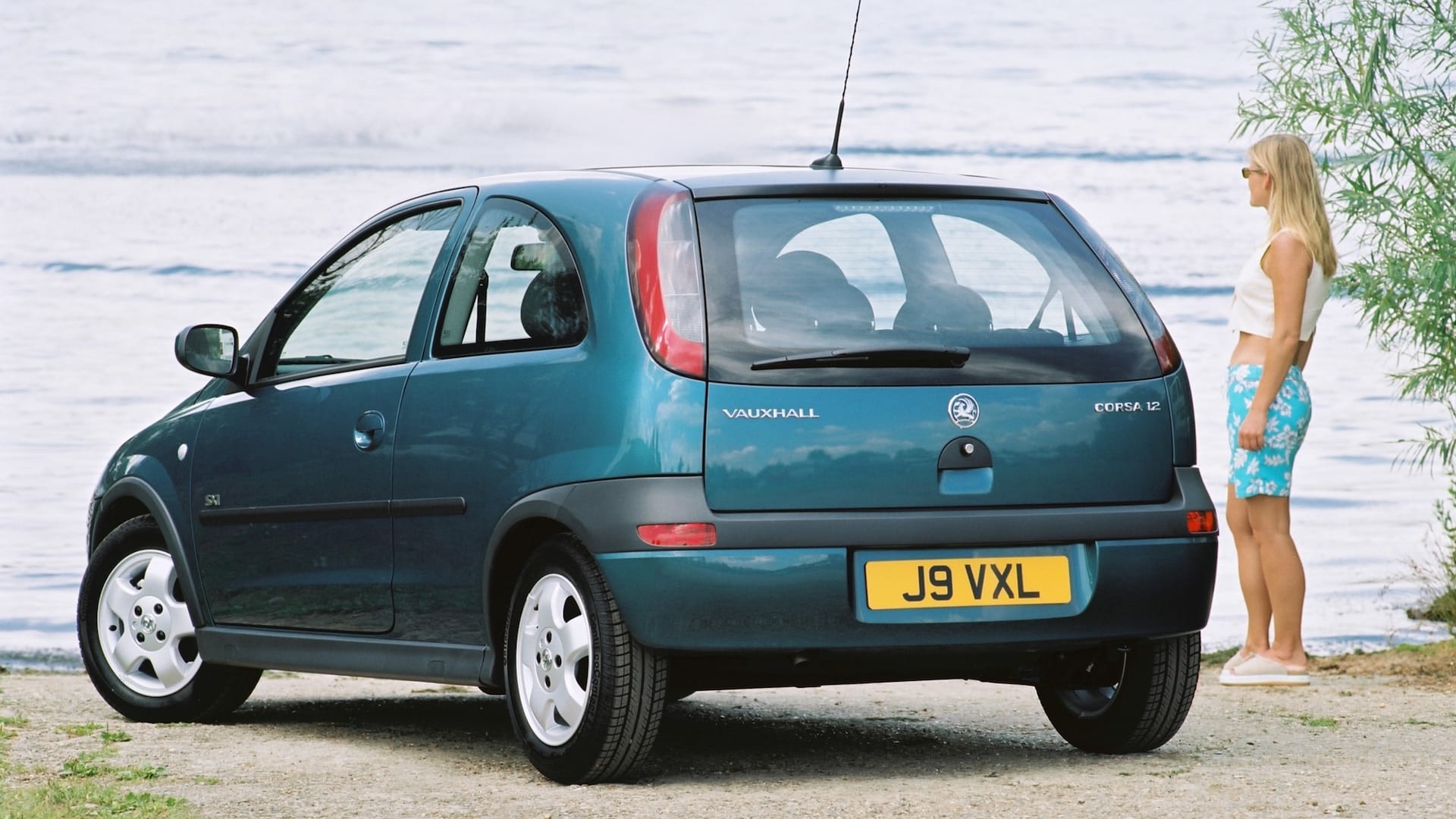
2000 Vauxhall Corsa
© VauxhallUnderneath the galvanised bodywork was a host of modern Ecotec petrol and diesel engines. Petrol options included the impressive 1.0-litre three-cylinder, while the 1.2 was chosen by 50 percent of customers.
A five-speed manual gearbox was standard across the range, with a four-speed automatic on the options list. Vauxhall’s ‘Easytronic’ automated manual could be combined with certain engines, too.
Like its predecessors, the Corsa remained easy to drive, with electronically assisted power steering that was light but accurate. It meant Vauxhall’s supermini continued to be a favourite of driving schools and young drivers.
-
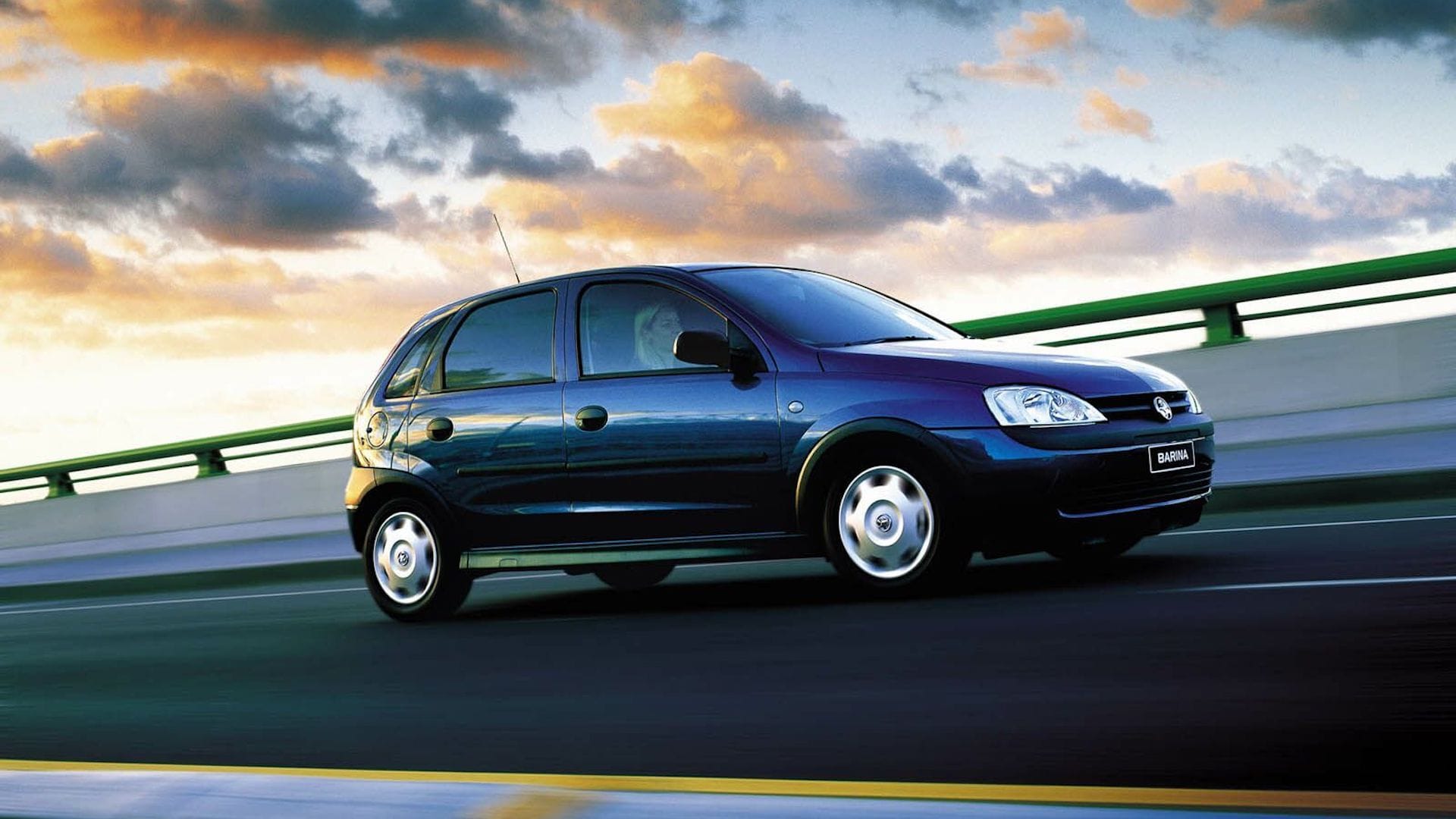
2000 Holden Barina
© GMGeneral Motors had started selling the Corsa in Australasia with the second-generation model in 1994, badged as the Holden Barina. It continued the trend with the Corsa C, launching the new car in 2001.
Looking almost identical to the Vauxhalll, save for the badges on the grille, the Barina proved to be popular Down Under. It was awarded the Wheels Car of the Year Award in 2001.
-
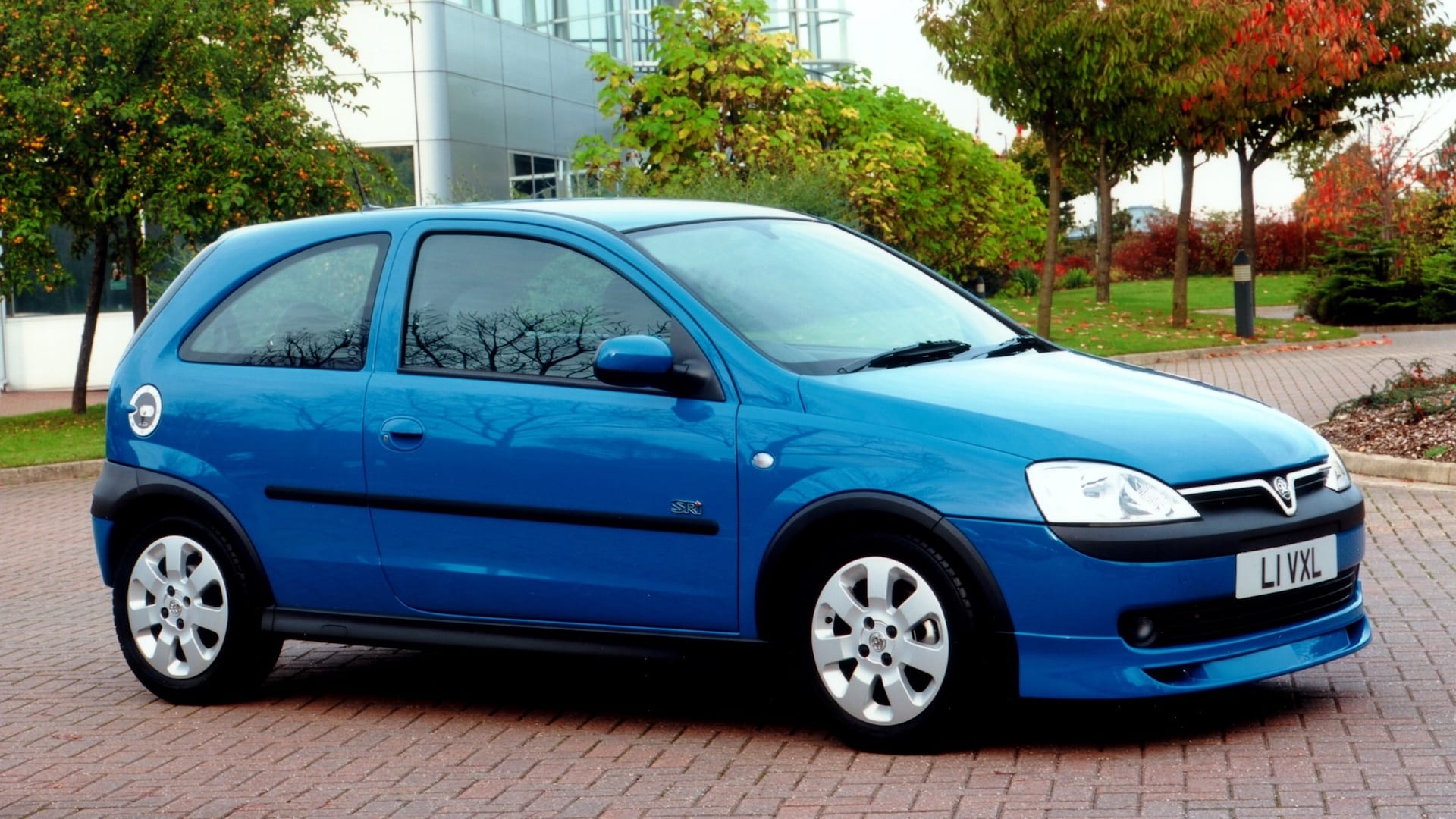
2000 Vauxhall Corsa SRi
© VauxhallAs with previous generations, performance models were a core part of the Corsa offering. Vauxhall launched the new-generation car with the SRi as the hottest version – and drivers could pick from 1.4- or 1.8-litre engines.
The 1.8-litre unit, sourced from the Astra, provided the Corsa SRi with a respectable 125hp and 121lb ft of torque. It meant a 0-60mph time of 8.0 seconds and a top speed of 126mph.
Fog lights, air conditioning, and sports seats with leather trim were all part of the SRi’s standard equipment.
-
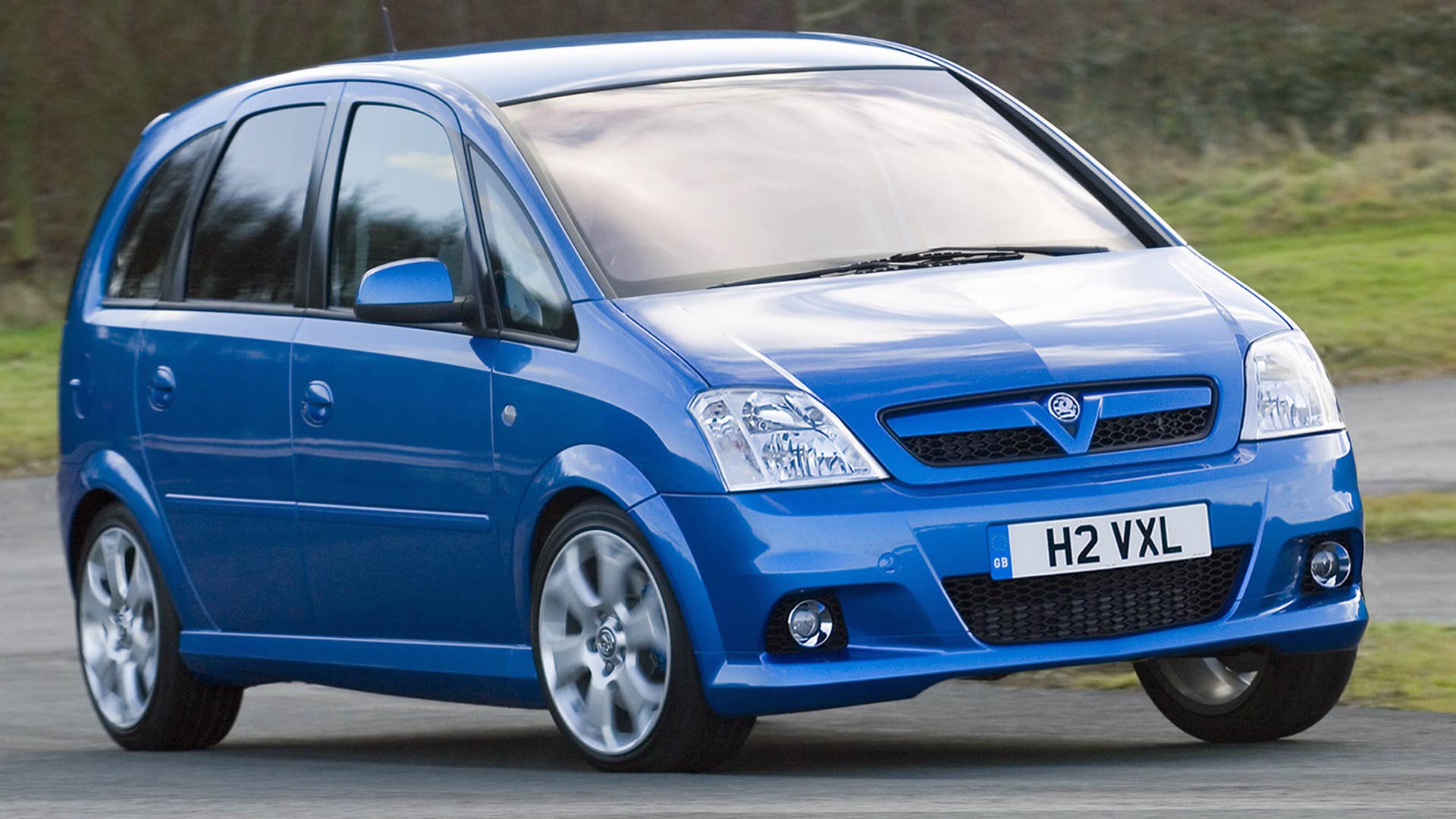
2003 Vauxhall Meriva
© VauxhallVauxhall used the Corsa C to cash-in on the trend of mini MPV models, releasing the Meriva in 2003. It shared the same ‘Gamma’ platform as the Corsa supermini, and borrowed ideas from the larger Zafira MPV.
Unlike the seven-seat Zafira, the new Meriva was strictly a five-seat MPV. However, Vauxhall’s FlexSpace allowed the rear seats to be folded flat or moved forwards and backwards.
The Meriva VXR with 178hp offered the unusual juxtaposition of a performance mini MPV.
-
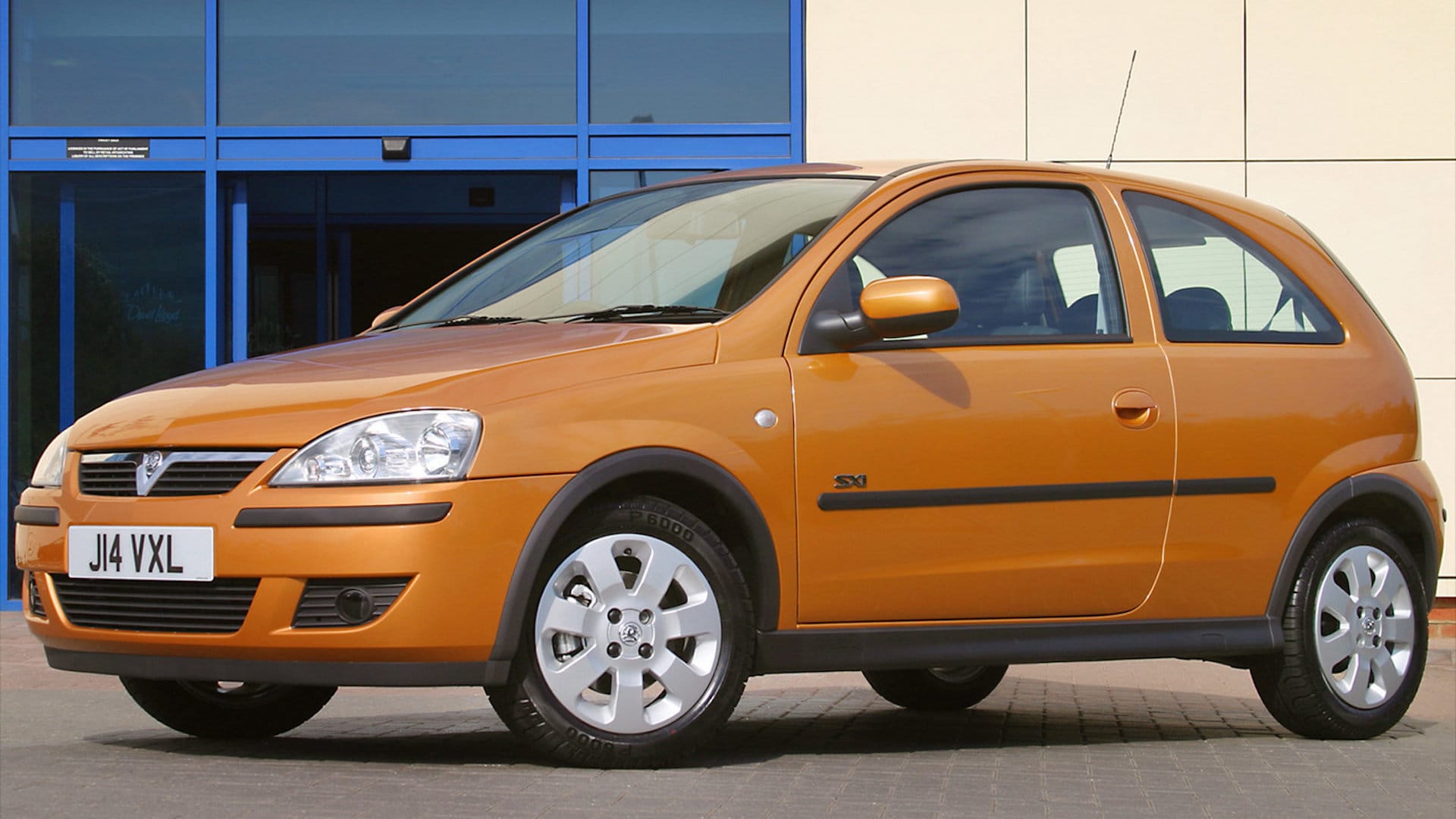
2003 Vauxhall Corsa SXi
© VauxhallAfter just three years on sale, Vauxhall completed an overhaul of the Corsa range in 2003. Exterior styling updates were minimal, with changes limited to clear-lens headlights and body-coloured bumpers with a refreshed design.
The 1.0-litre and 1.4 petrol engines gained new TwinPort technology to help save fuel, with common-rail diesels also offered. Included in the latter was a new 1.7-litre CDTi diesel, with 99hp and 177lb ft of torque.
These updates helped the Corsa remain competitive, being the UK’s second best-selling car from 2002 to 2004. By the end of production in 2006, Vauxhall had sold 566,000 examples of this Corsa in Britain.
-
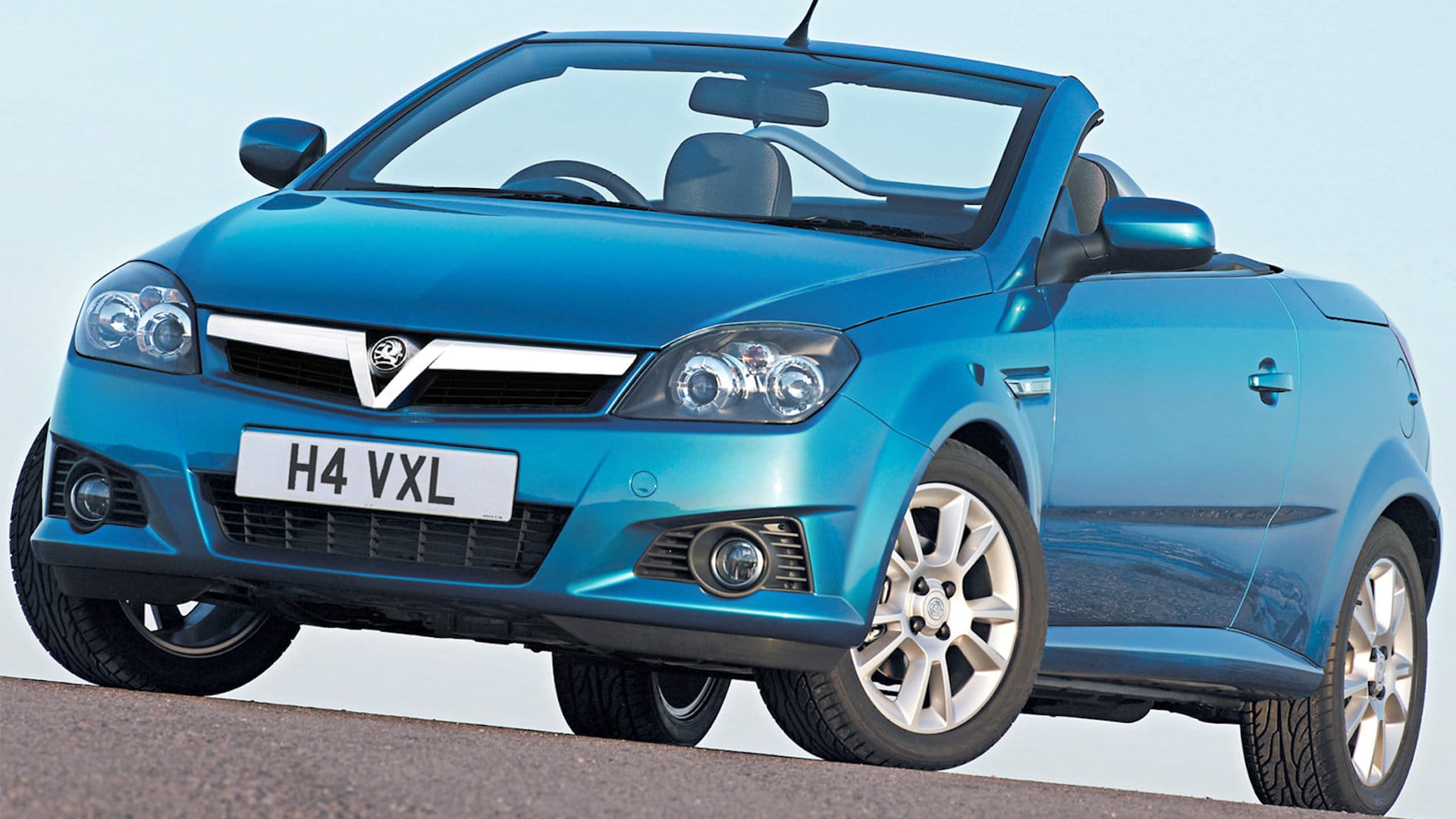
2004 Vauxhall Tigra
© VauxhallAfter three years, Vauxhall brought the Tigra name back, this time for a Corsa-based coupe-convertible. Fitted with a retractable hard-top roof, the Tigra was intended to make the popular Peugeot 206 CC seem instantly outdated.
Ditching rear seats meant the Tigra had a useful 440-litre boot with the roof up, and 250 litres with it lowered. Engine options included the 1.3-litre CDTi diesel, along with 1.4 and 1.8 petrols.
-
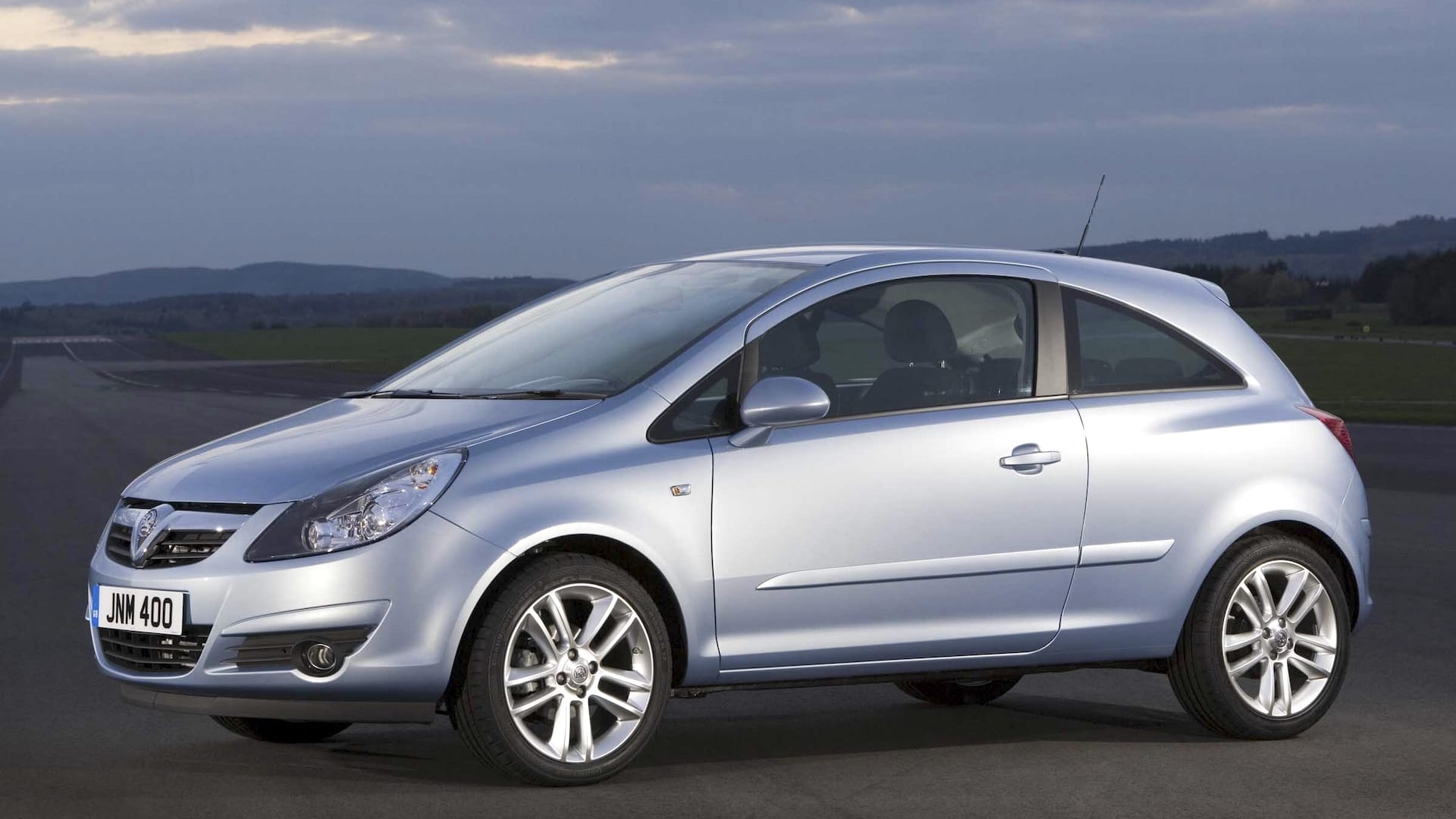
2006 Vauxhall Corsa
© VauxhallBigger, more mature and with a higher degree of quality was how Vauxhall pitched the all-new Corsa D in 2006. It was substantially bigger than its predecessor, measuring just 1mm shy of four metres.
Aiding this larger stature was the use of the General Motors SCCS platform, which also underpinned the Fiat Grande Punto and Alfa Romeo Mito.
Compared to previous models, the new Corsa was better built. Vauxhall also added some extra visual flair, with large round air vents making it appear less humdrum on the inside.
-
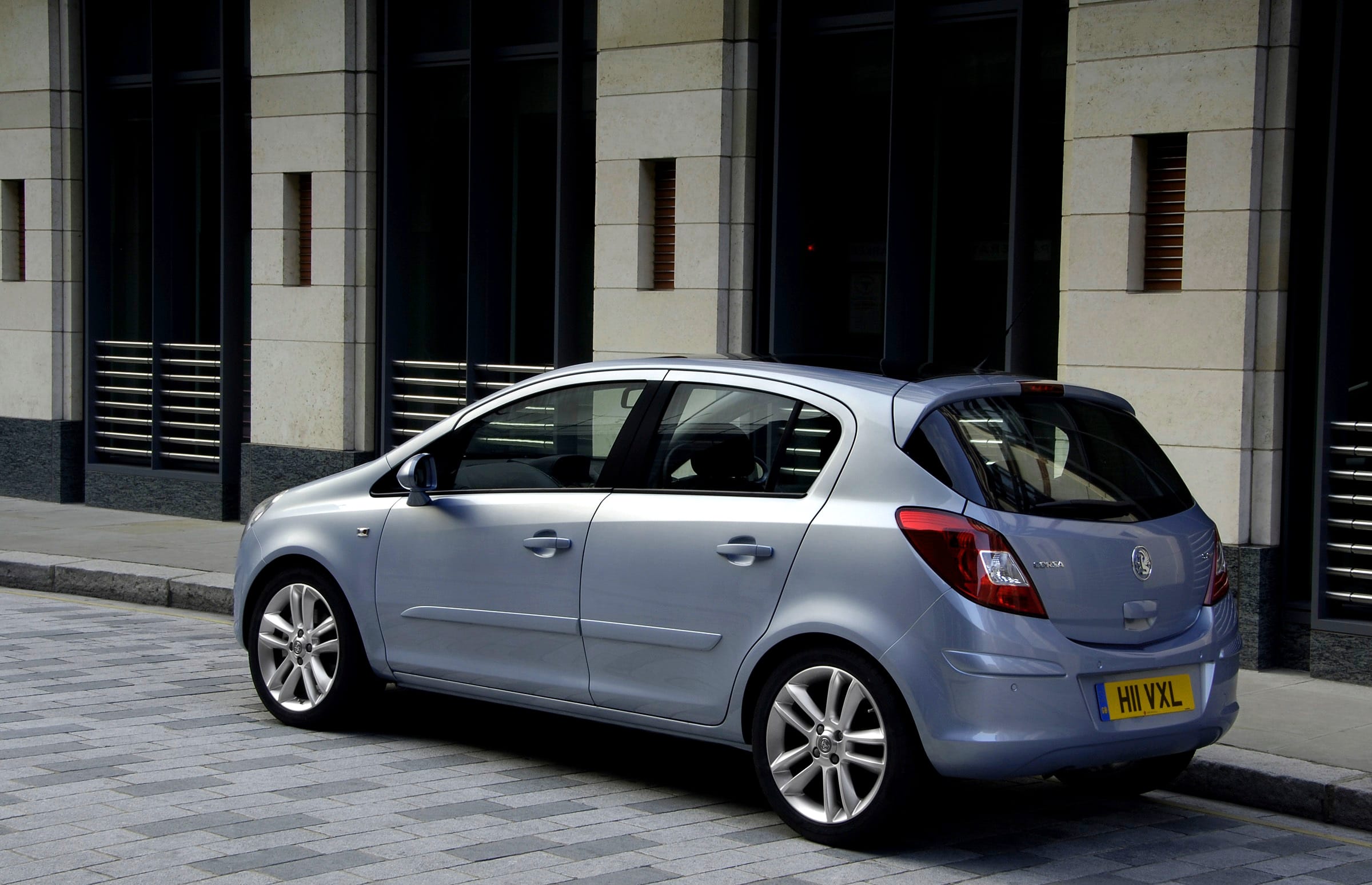
2006 Vauxhall Corsa
© VauxhallThe styling of three- and five-door models became more distinct for the Corsa D. Describing the three-door hatchback as having a ‘coupe-like’ roofline may have been stretching things, but it certainly looked different compared with the upright five-door.
Engine options included staples like the 1.0-litre three-cylinder petrol, along with 1.2 and 1.4 units.
A new SRi model featured a turbocharged 1.6 with 148hp, and even a 1.7 diesel with 123hp.
-
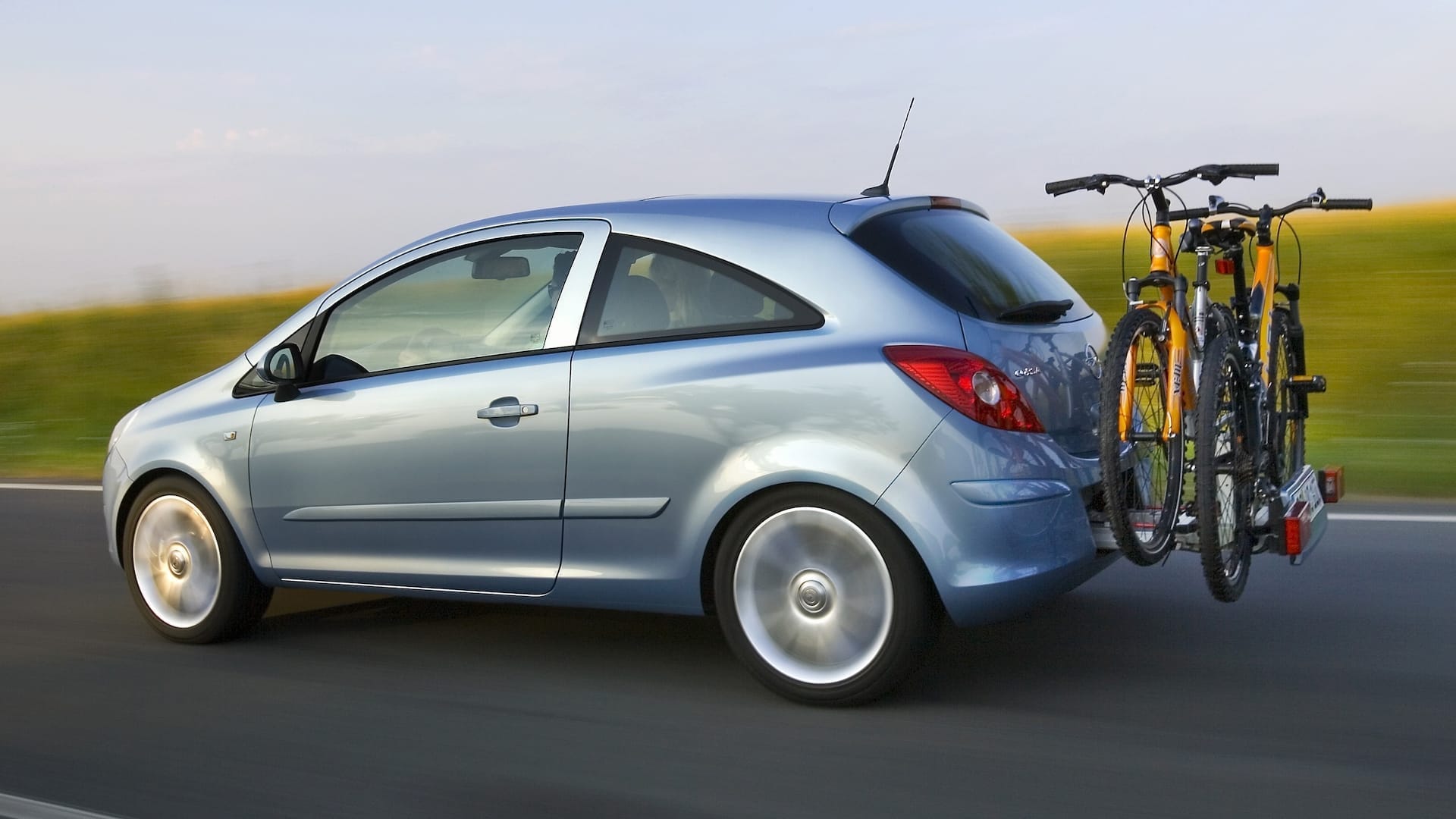
2006 Vauxhall Corsa
© VauxhallOne of the most impressive innovations of the new Corsa was the optional FlexFix bicycle rack. A section of the rear bumper could be pulled out, offering a rack to hold two bikes. A number plate and a set of additional rear lights were also incorporated into the FlexFix.
Other practical elements of the Corsa included a two-tier boot, with additional space beneath the floor. Unlike many of its rivals, the Corsa still retained a full-size spare wheel.
Hidden inside the hinge of the glovebox is the outline of a shark, added by the designer at the request of his son.
-
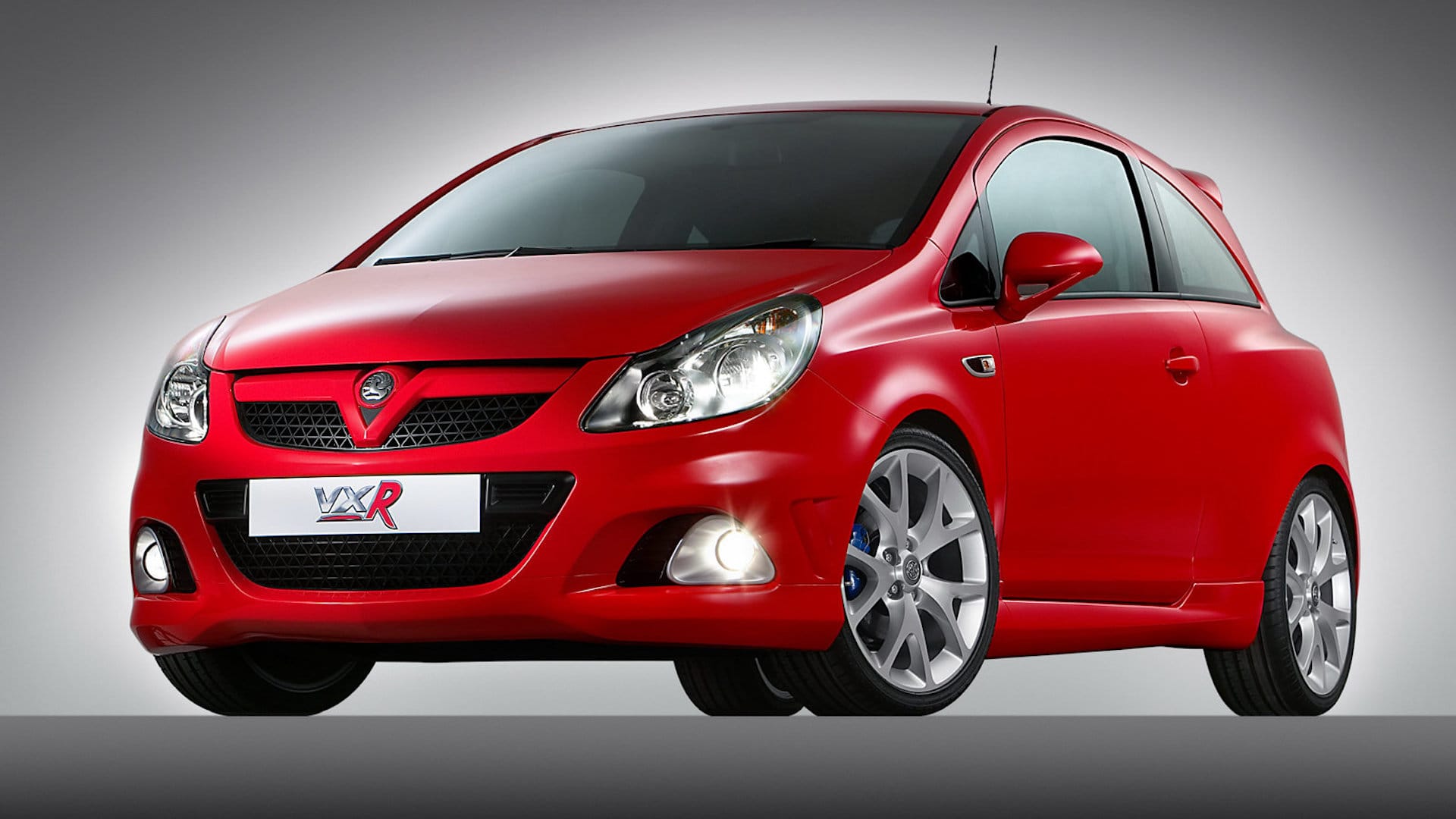
2007 Vauxhall Corsa VXR
© VauxhallFollowing the lead of the Meriva VXR, Vauxhall released a high-performance version of the Corsa in 2007. It marked a major leap forward, turning the Corsa into the king of the McDonald’s car park.
A modified 1.6-litre turbocharged engine delivered 189hp and 170lb ft of torque. A special overboost mode allowed a five-second increase in torque to 196lb ft. This allowed a 0-62mph time of just 6.8 seconds, with a top speed of 140mph.
Other VXR features included an aggressive bodykit and a distinctive triangular exhaust tailpipe. A set of 17-inch alloy wheels, sports suspension and Recaro bucket seats completed the transformation.
-
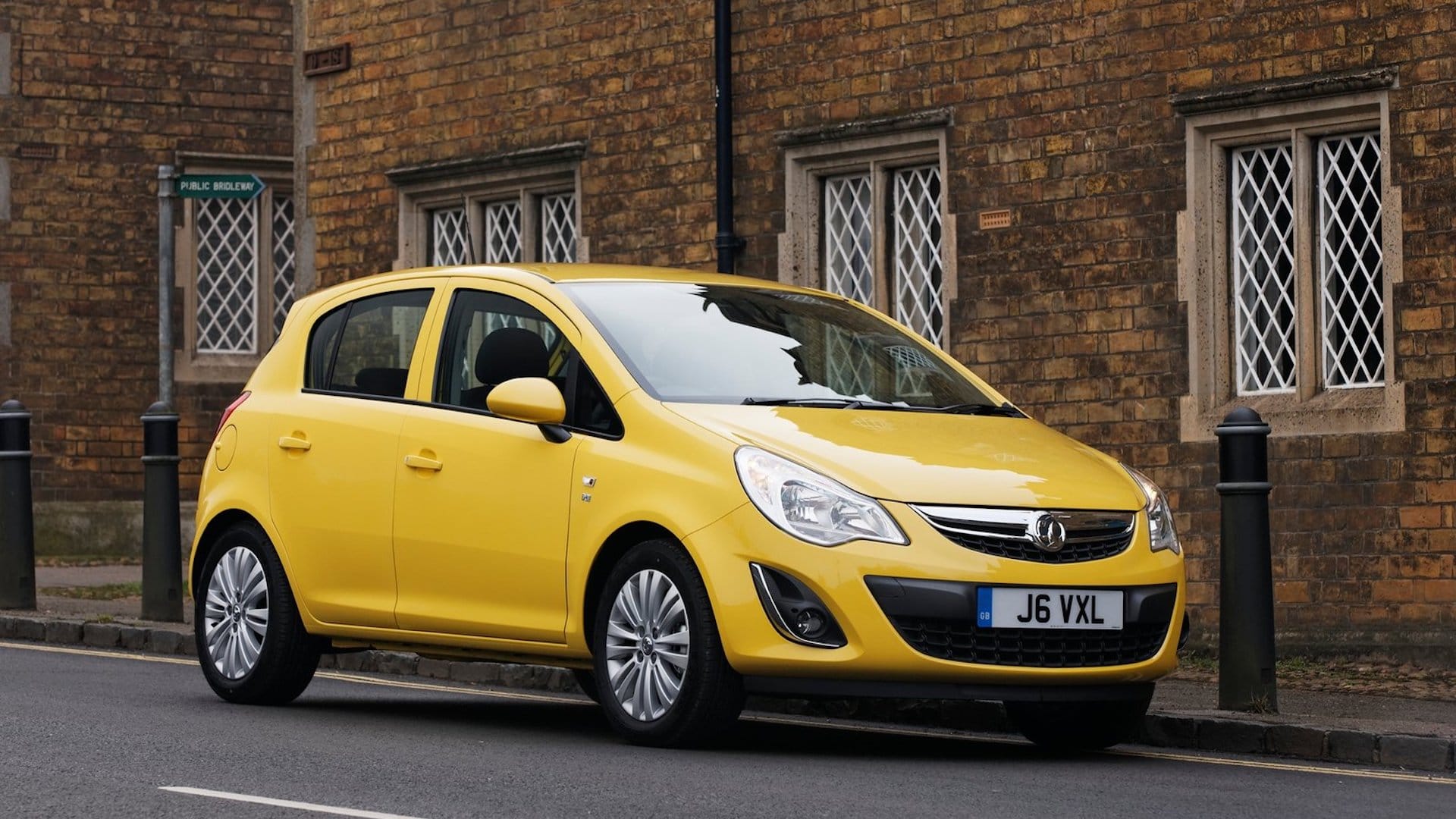
2011 Vauxhall Corsa
© VauxhallWith the supermini sector more competitive than ever, Vauxhall updated the Corsa in 2011. This meant improved interior quality to fight the Ford Fiesta and Volkswagen Polo, along with updated engines.
A new 1.4-litre turbo petrol was the newest engine, while the entry-level 1.0-litre three-cylinder gained start-stop technology.
-
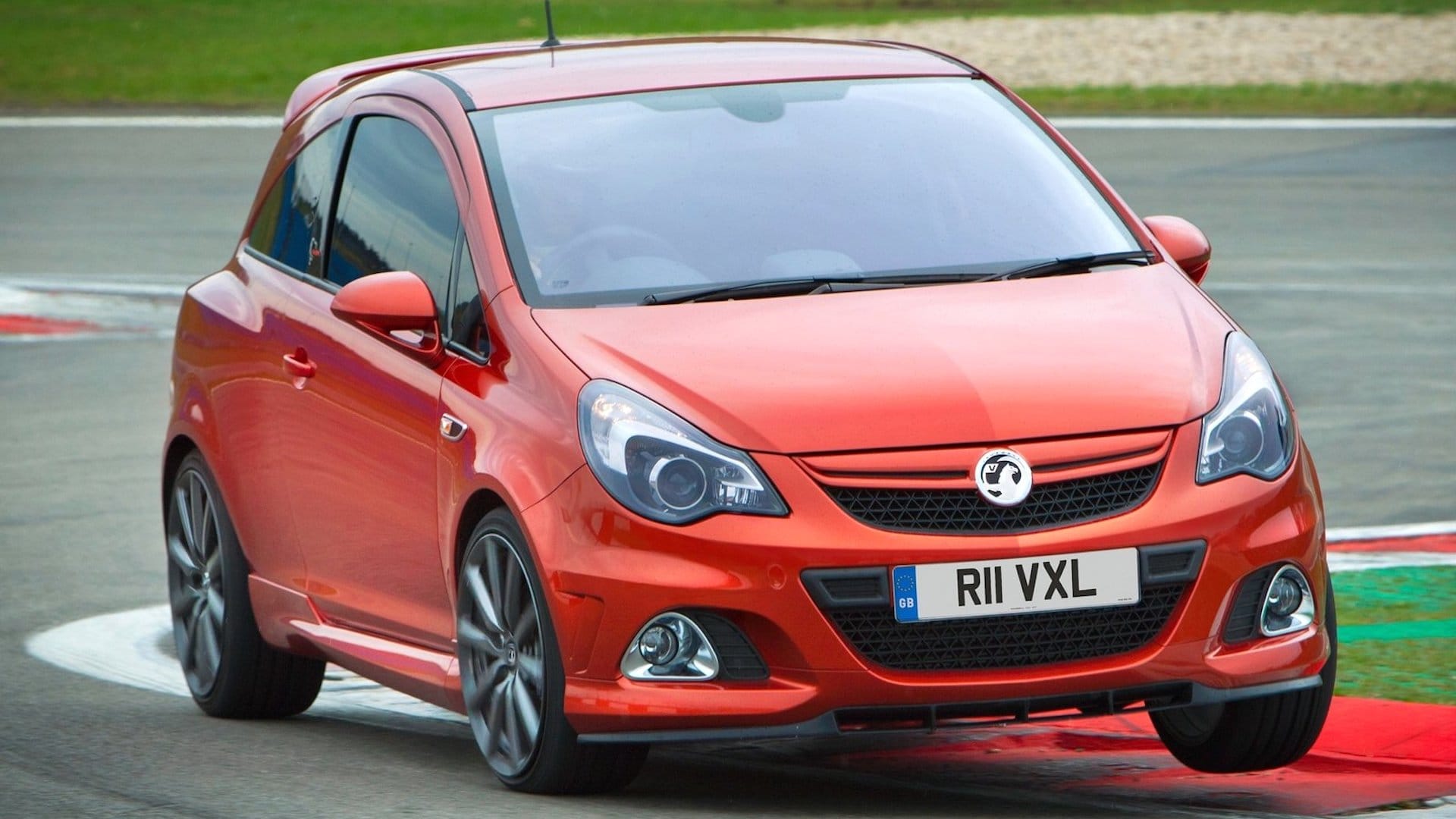
2011 Vauxhall Corsa VXR Nurburgring
© VauxhallInspired by Opel’s performance development centre at the Nurburgring in Germany, the Corsa VXR was pushed even further in 2011.
The same turbocharged 1.6-litre engine was boosted to deliver 202hp, with torque now at 184lb ft. This resulted in the 0-62mph time falling to 6.5 seconds, while top speed increased further to 143mph.
Helping harness this power was a new limited-slip differential and larger Brembo brakes. Bilstein developed new suspension components, helping lower the ride height by 20mm.
-
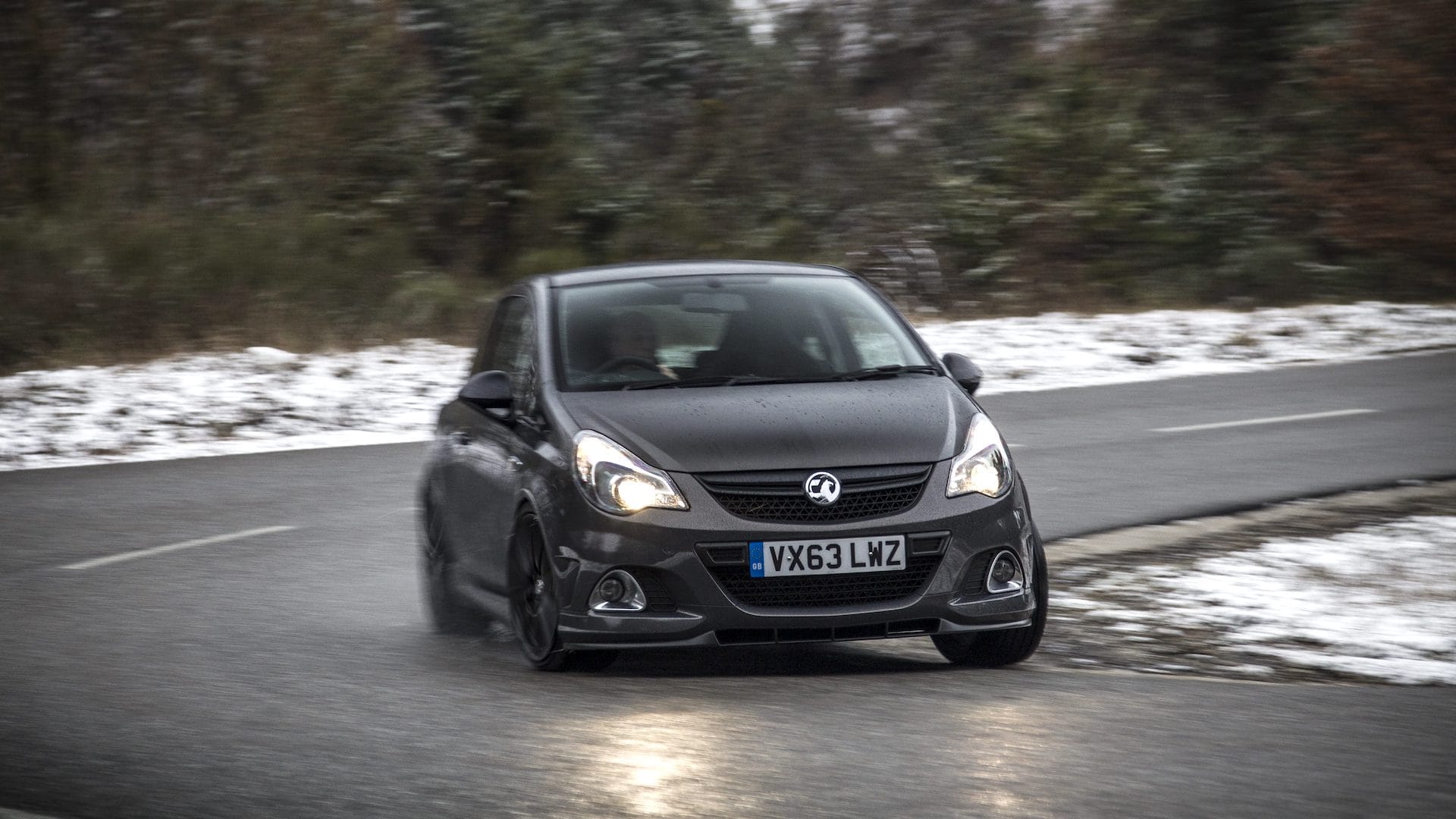
2014 Vauxhall Corsa VXR Clubsport
© VauxhallAs a final farewell to the fourth-generation Corsa, Vauxhall released the VXR Clubsport in 2014. It retained the same engine and horsepower, but had a stainless steel exhaust developed by Remus. A list price of over £22,400 made the Clubsport appear expensive against newer hot hatches.
It brought the Corsa D generation to an end, with a total of 700,000 examples sold in the UK.
-
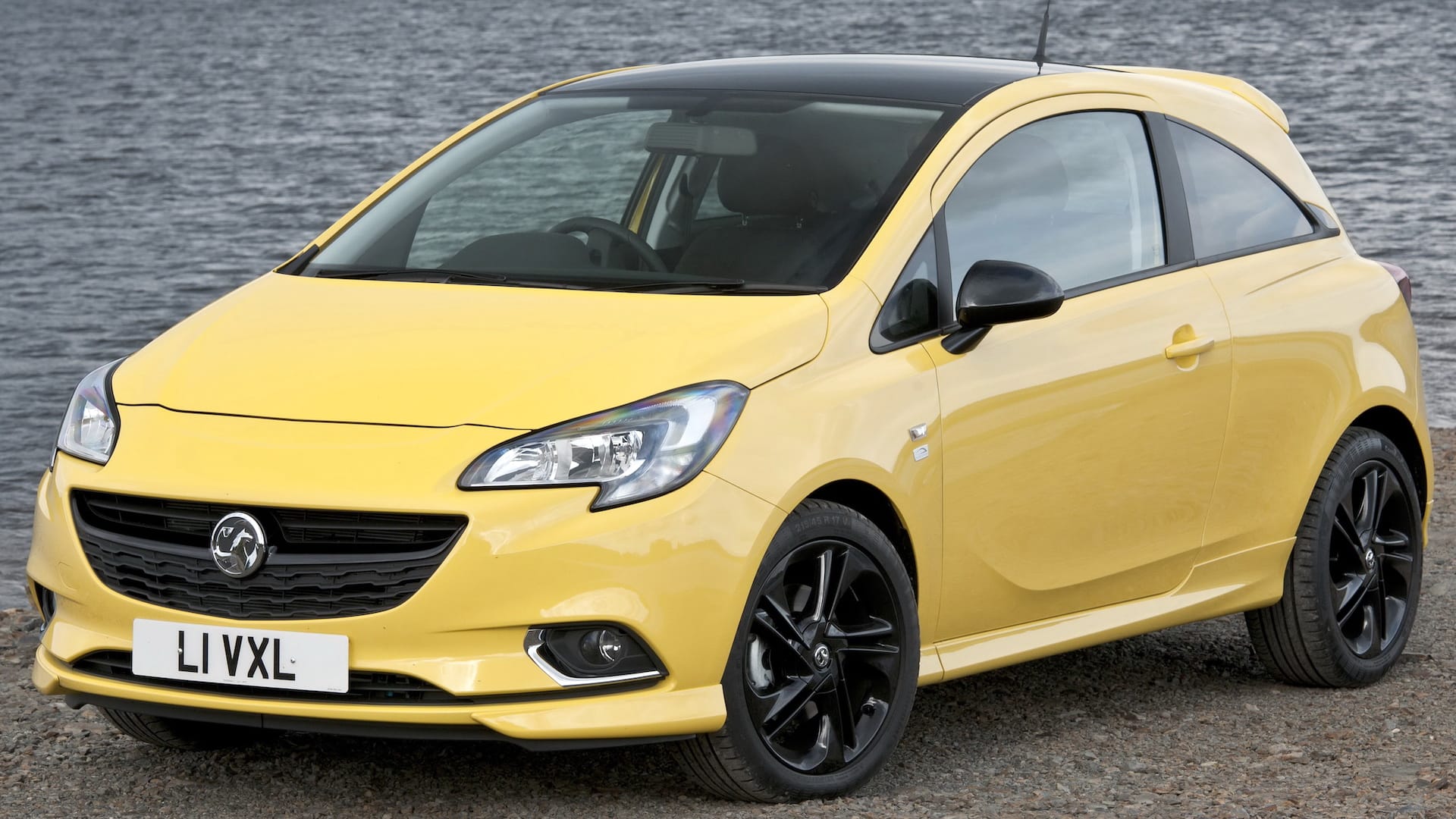
2014 Vauxhall Corsa
© VauxhallUnlike previous models, the fifth-generation ‘Corsa E’ was a mixture of old and new. It retained the same SCCS platform as its predecessor, even using the same windows as before. However, every body panel was new, with only minor details such as wing mirrors carried over.
Styling details of the new Corsa took inspiration from the smaller Vauxhall Adam, but the retained underpinnings meant a large degree of similarity to the previous model.
-
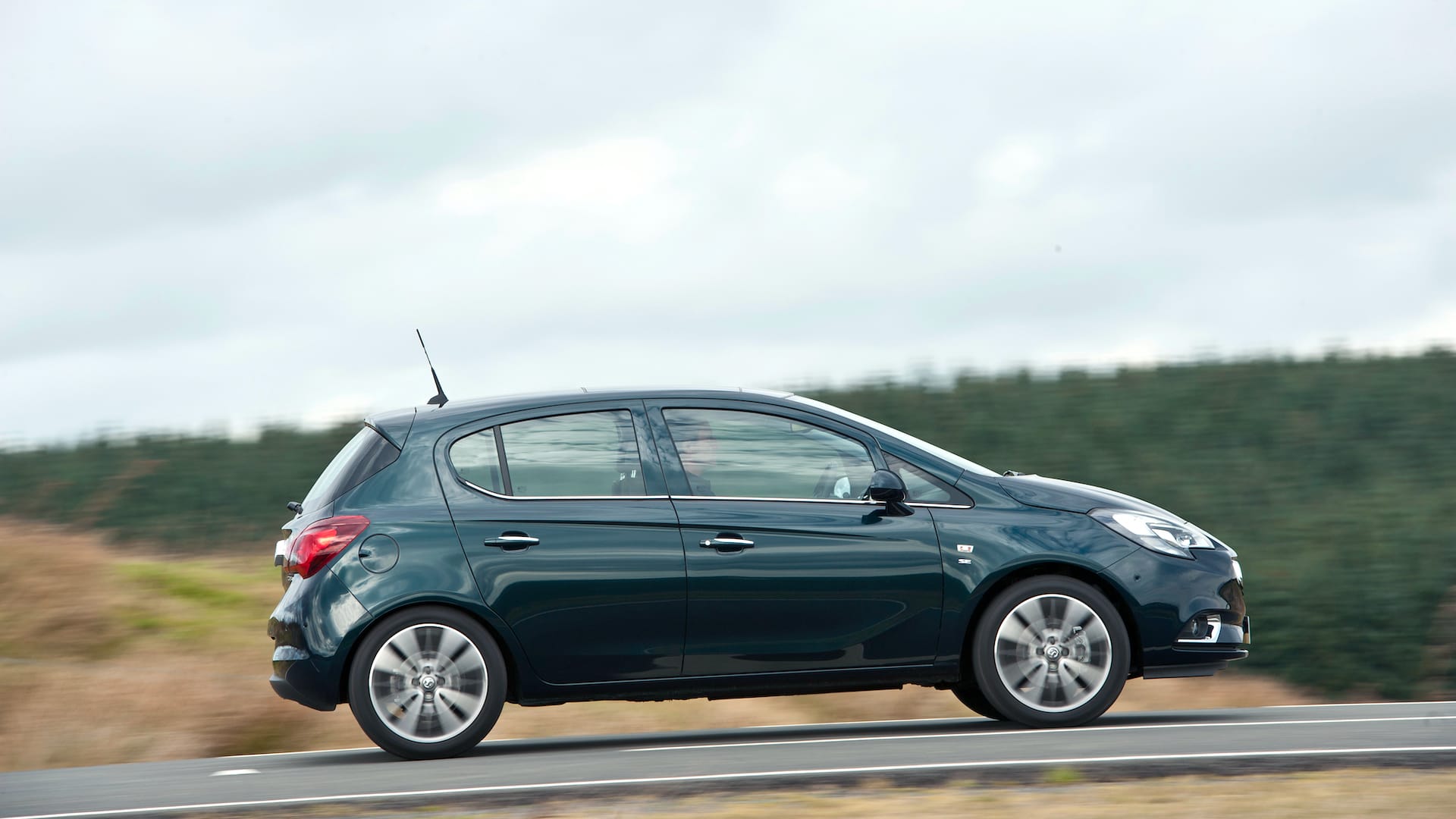
2014 Vauxhall Corsa
© VauxhallThe driving experience of the new Corsa made a greater leap forward, edging closer to the ability of the Ford Fiesta. Greater chassis stiffness and torsional rigidity allowed for better body control, along with an improved ride quality.
Leading the way at the launch of the new Corsa was a turbocharged 1.0-litre petrol engine. Offered in both 89hp and 113hp flavours, it was combined with a six-speed manual gearbox as standard.
Vauxhall retained the naturally aspirated 1.2 and 1.4-litre engines, alongside a 99hp 1.4 turbo. The 1.3-litre CDTi diesel continued to offer impressive fuel economy for those doing big mileage.
-
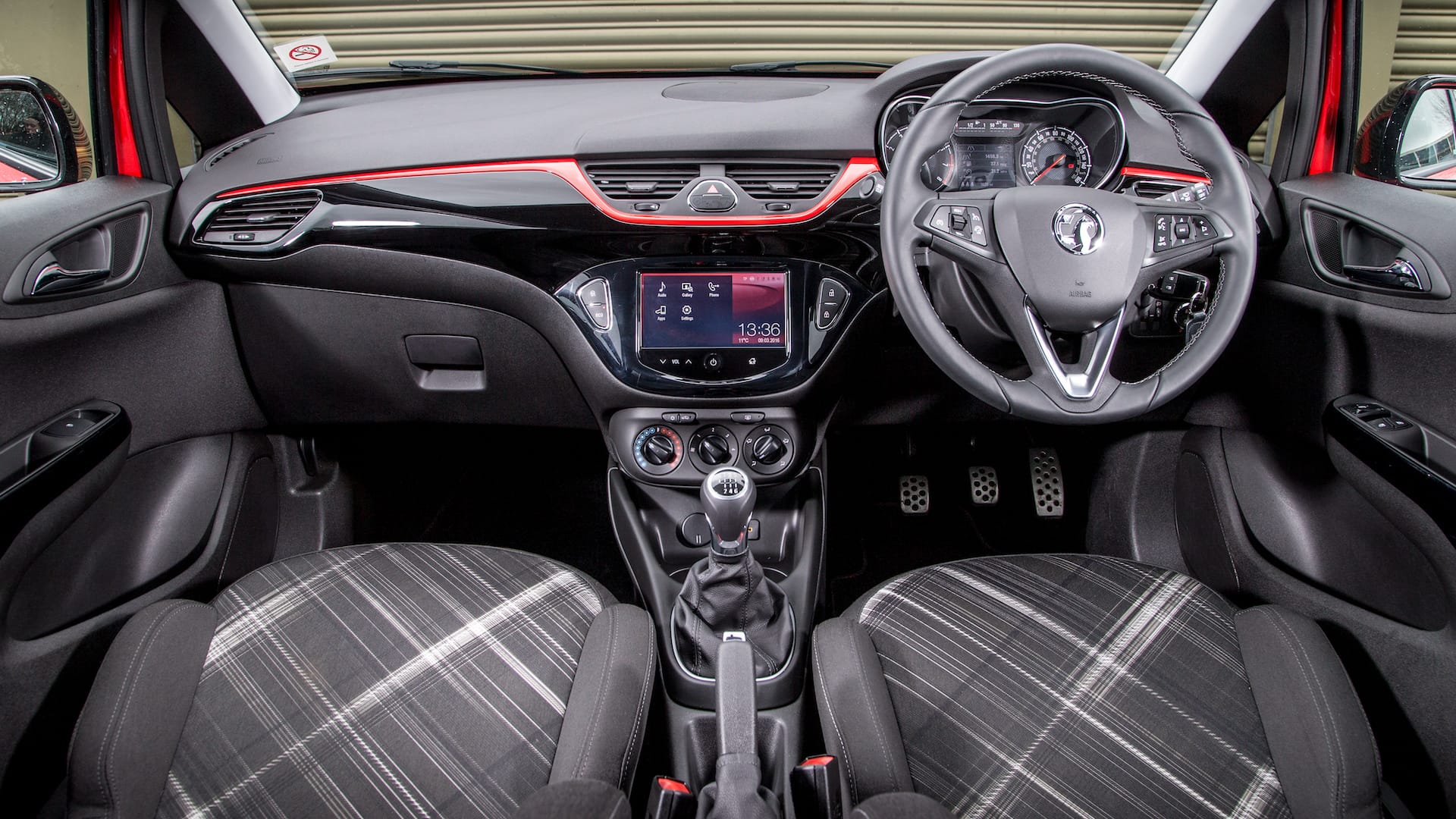
2014 Vauxhall Corsa
© VauxhallWhere the new Corsa really showed a difference was on the inside. It marked major progress, integrating a new 7.0-inch Intellilink colour touchscreen. This included smartphone connectivity, with the ability to use Apple CarPlay and Android Auto.
Acres of piano black gloss trim, satin chrome and soft-touch materials made the Corsa feel upmarket. Buyers could also opt for a heated steering wheel, automatic climate control and Lane Keeping Assist.
-
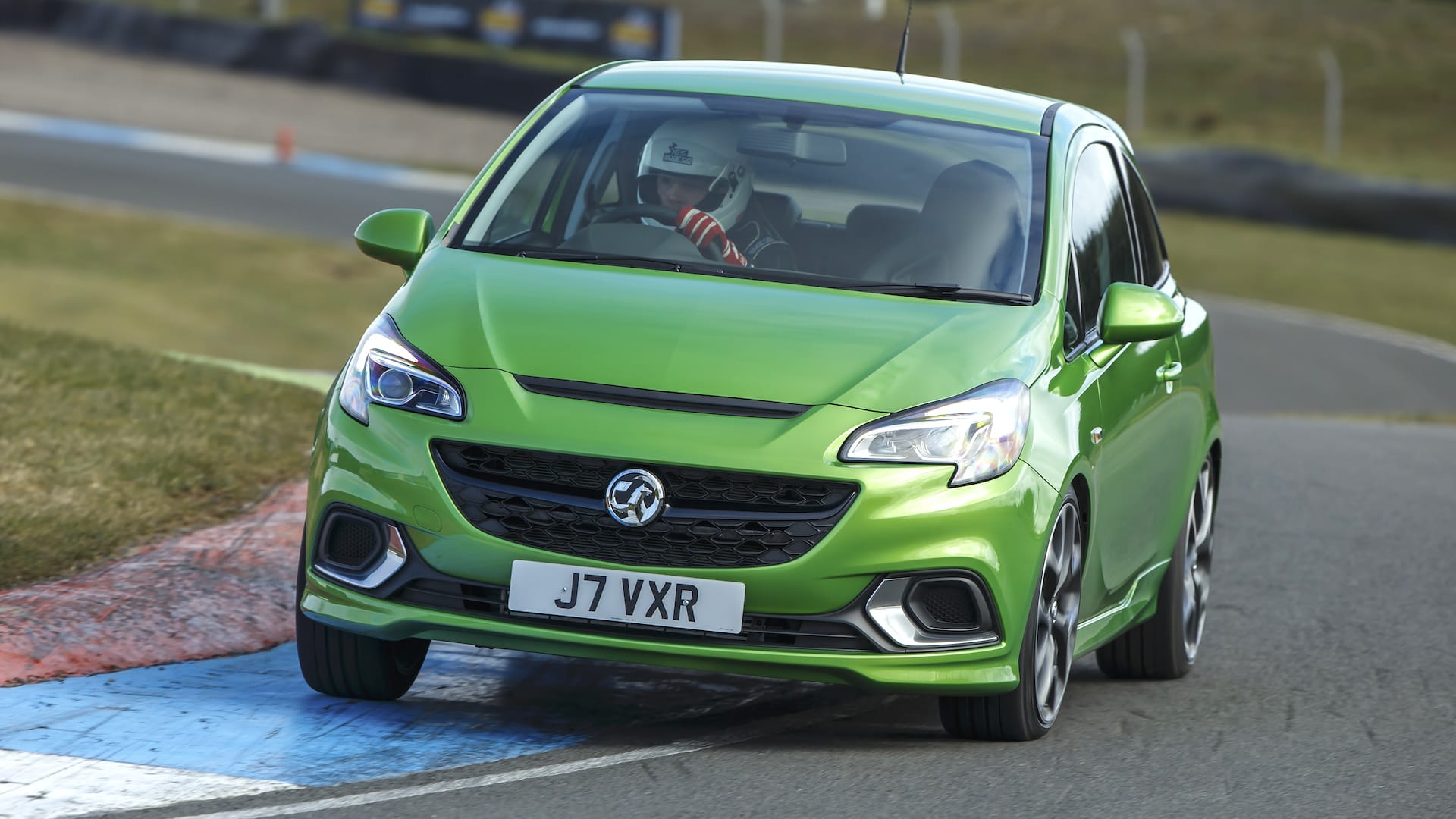
2015 Vauxhall Corsa VXR
© VauxhallA new Vauxhall Corsa VXR emerged in 2015, aimed at tackling the dominant Ford Fiesta ST. This meant spending even more time at the Nurburgring, tuning the Corsa VXR and its 1.6-litre turbocharged engine.
Although broadly the same engine as found in its predecessor, it delivered a broader spread of torque, with 205hp and 181lb ft. An overboost function remained, with a 0-62mph time of 6.8 seconds.
Buyers could also opt for a hardcore £2,400 Performance Pack. This brought Koni dampers, bigger 330mm four-pot Brembo front brakes, 18-inch wheels with Michelin Pilot Super Sport tyres, plus a Drexler mechanical limited-slip differential to the party.
-
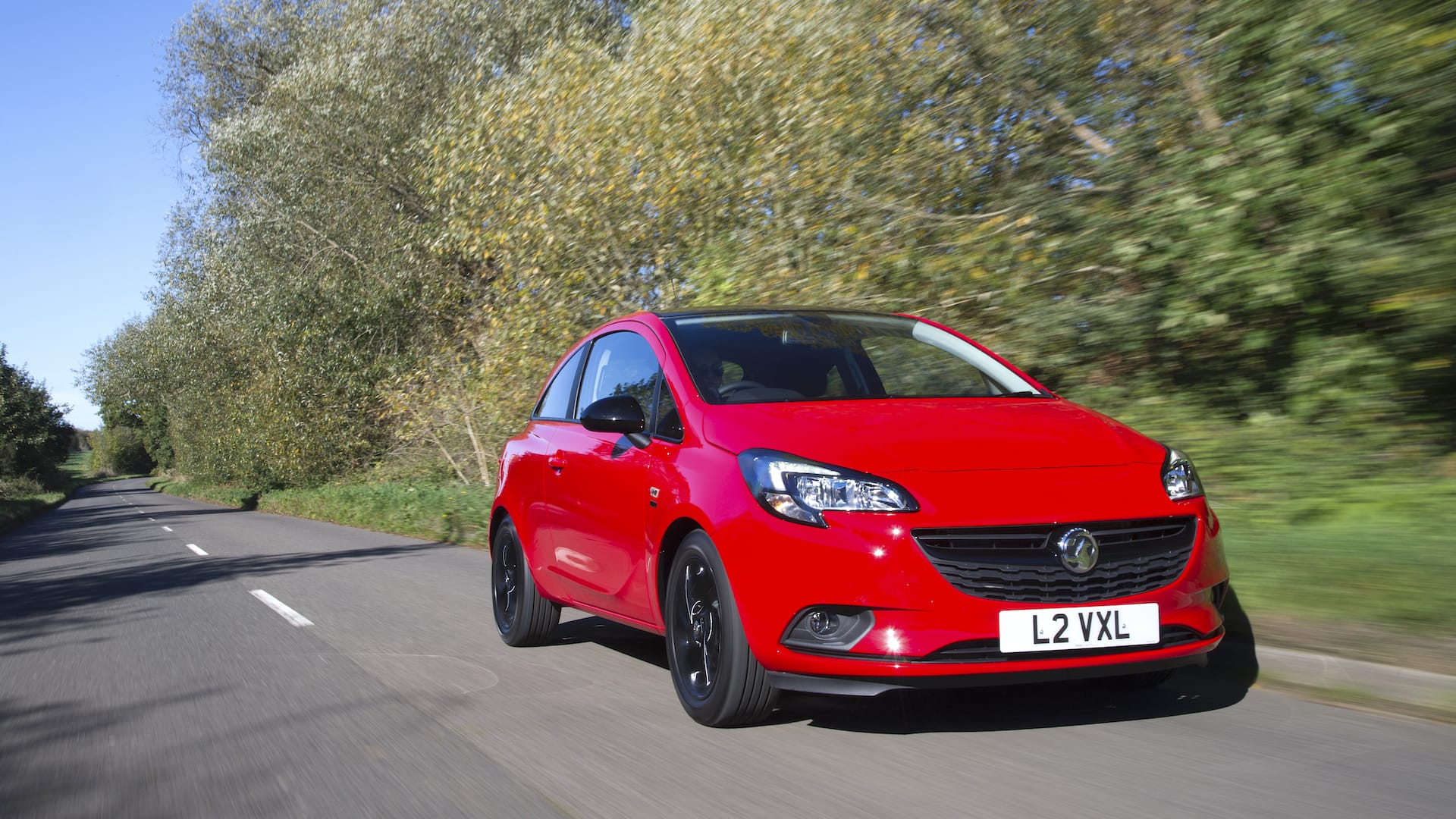
2018 Vauxhall Corsa
© VauxhallGeneral Motors had planned to replace the Corsa with an all-new model in 2017. However, the sale of Opel and Vauxhall to Groupe PSA resulted in its development being cancelled.
To plug the gap, Vauxhall gave the Corsa the lightest of updates, while also reducing the range of engines available. A naturally aspirated 1.4-litre was offered in 75hp and 90hp outputs, with a turbocharged version delivering 100hp.
-
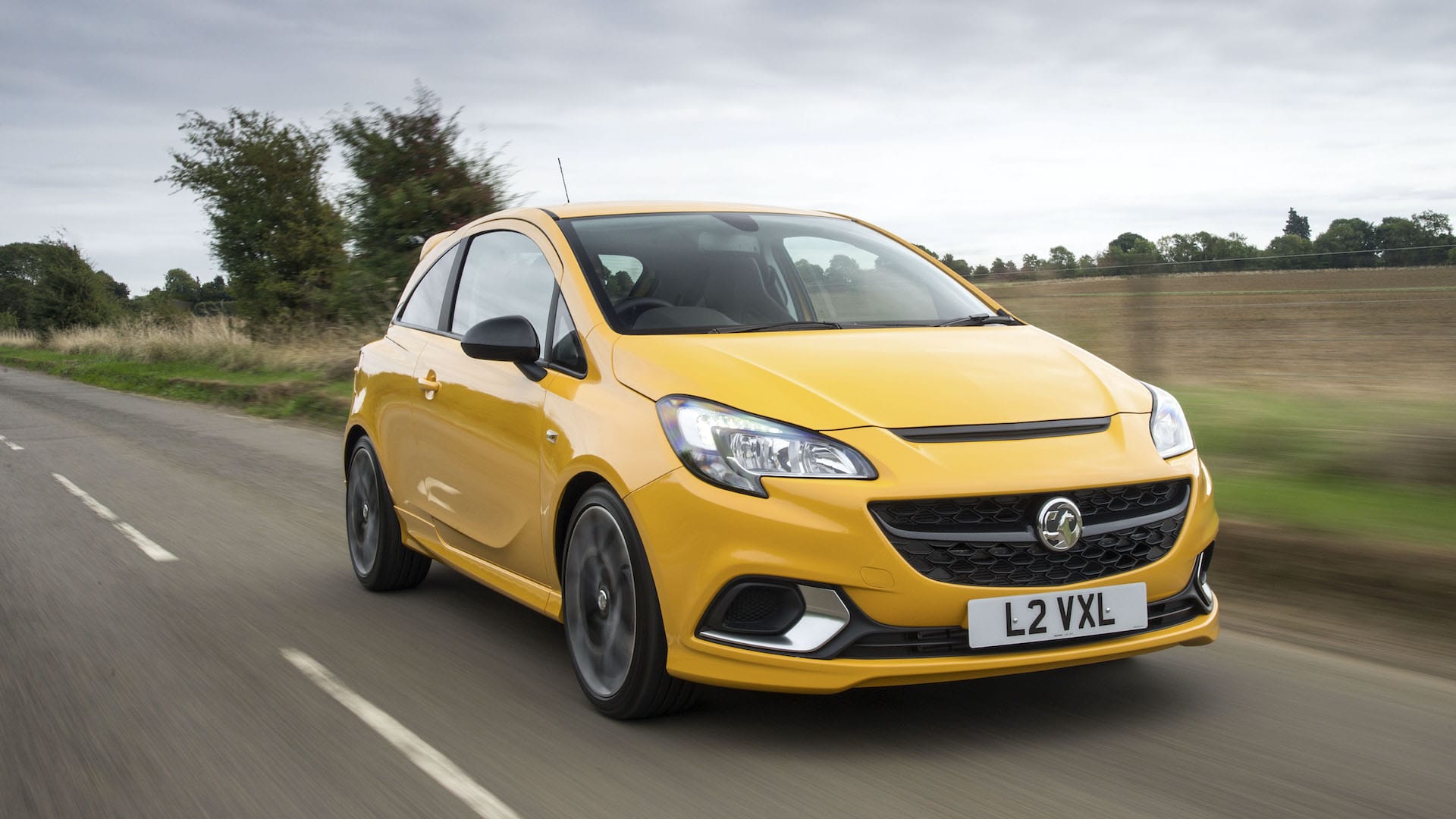
2018 Vauxhall Corsa GSi
© VauxhallThe surprise package of the updated 2018 range was the return of the Corsa GSi. Using a 150hp version of the 1.4-litre turbocharged engine, this was more than just a fancy bodykit and nostalgic badge.
Tweaks to the engine allowed it to maintain boost for longer, and were combined with a short-ratio manual gearbox. Koni suspension, Michelin Pilot Sport tyres and larger brakes tick all the boxes for a genuine hot hatch.
Although it could not quite compete with the Ford Fiesta ST, it was still a fitting send-off for the fifth-generation Corsa.
-
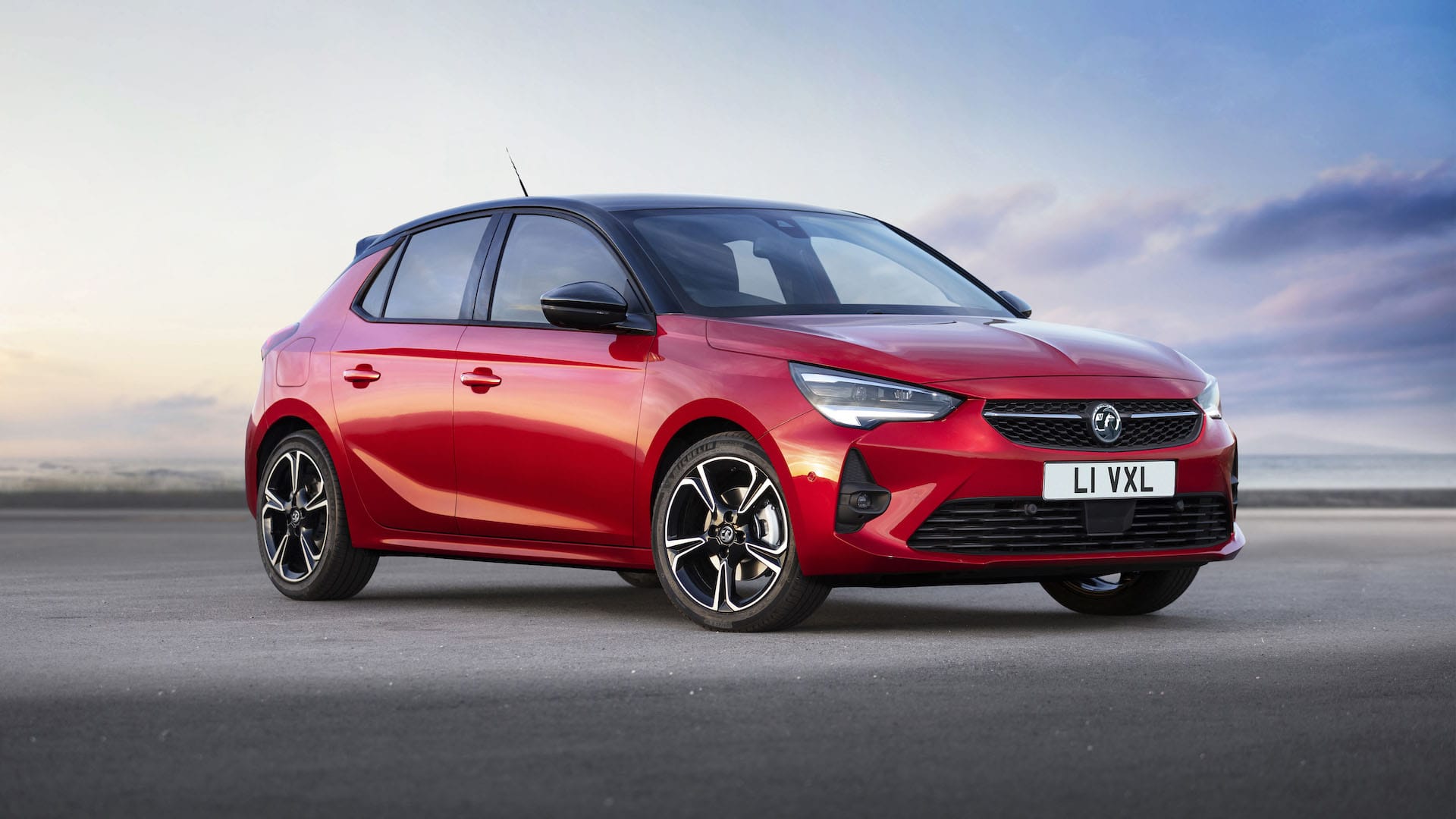
2019 Vauxhall Corsa
© VauxhallAfter 13 years, the 2019 ‘Corsa E’ marked a brand-new design on a modern platform. The sale of Opel and Vauxhall meant development had to restart on a Groupe PSA platform, and the new car sharing its chassis with the Peugeot 208.
This was not necessarily a bad thing, giving the new Corsa the opportunity to be equipped with a range of all-new engines.
Buyers have the choice of a naturally aspirated 1.2-litre petrol, along with a 1.2 turbo in two outputs. A 1.5-litre diesel also appears on the options list.
-
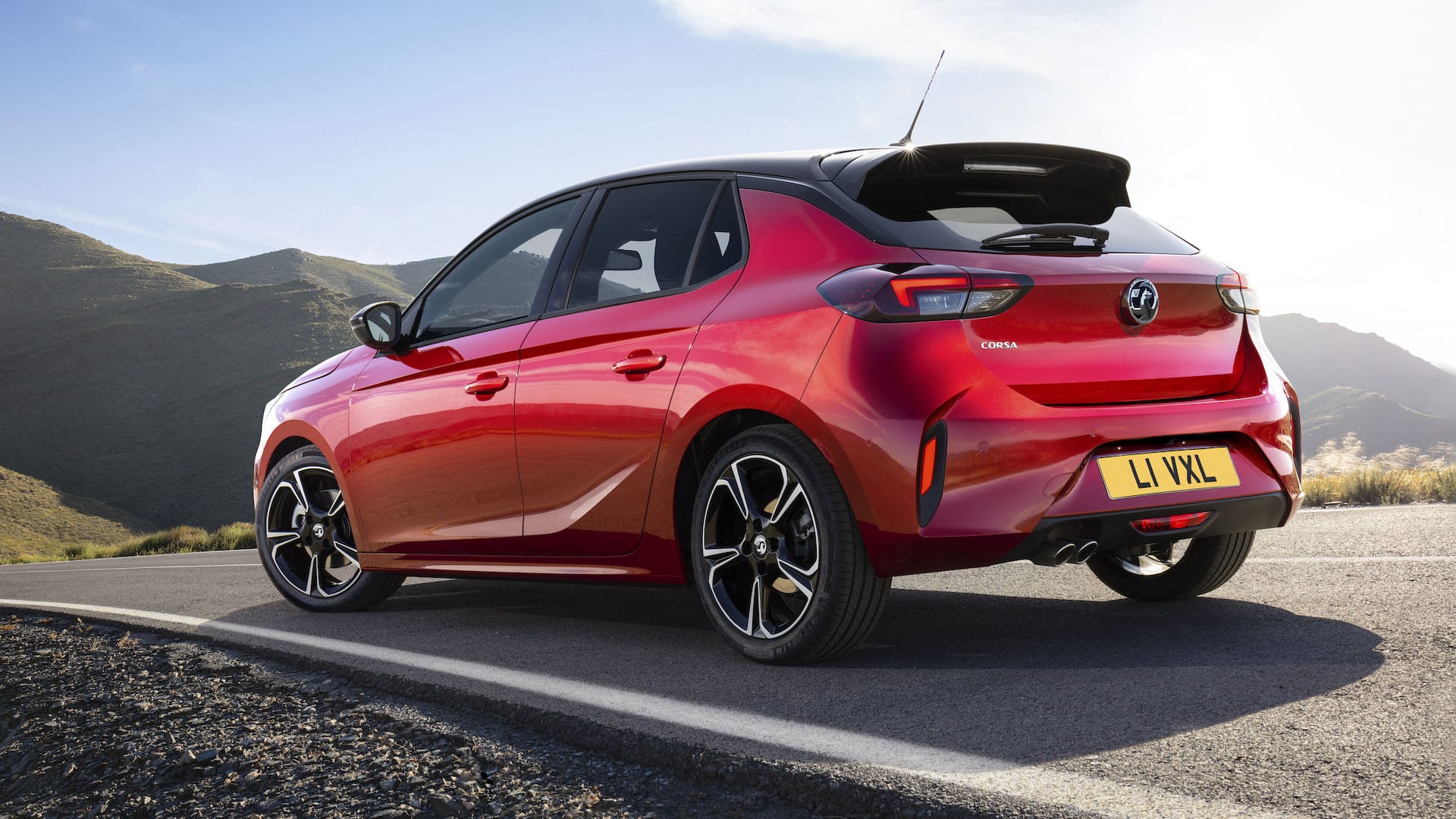
2019 Vauxhall Corsa
© VauxhallCompared to its predecessor, the new Corsa is longer, wider and lower, with a bolder look. A lower centre of gravity also helps improve handling, with room for passengers and luggage benefitting from the increased dimensions.
It’s also packed full of technology, including the ability to specify autonomous parking, a panoramic rear-view camera and adaptive full-LED matrix headlights. The latter marks the first time these have been offered in the supermini class.
Although it may have taken some time, the sixth-generation Corsa was certainly worth waiting for.
-
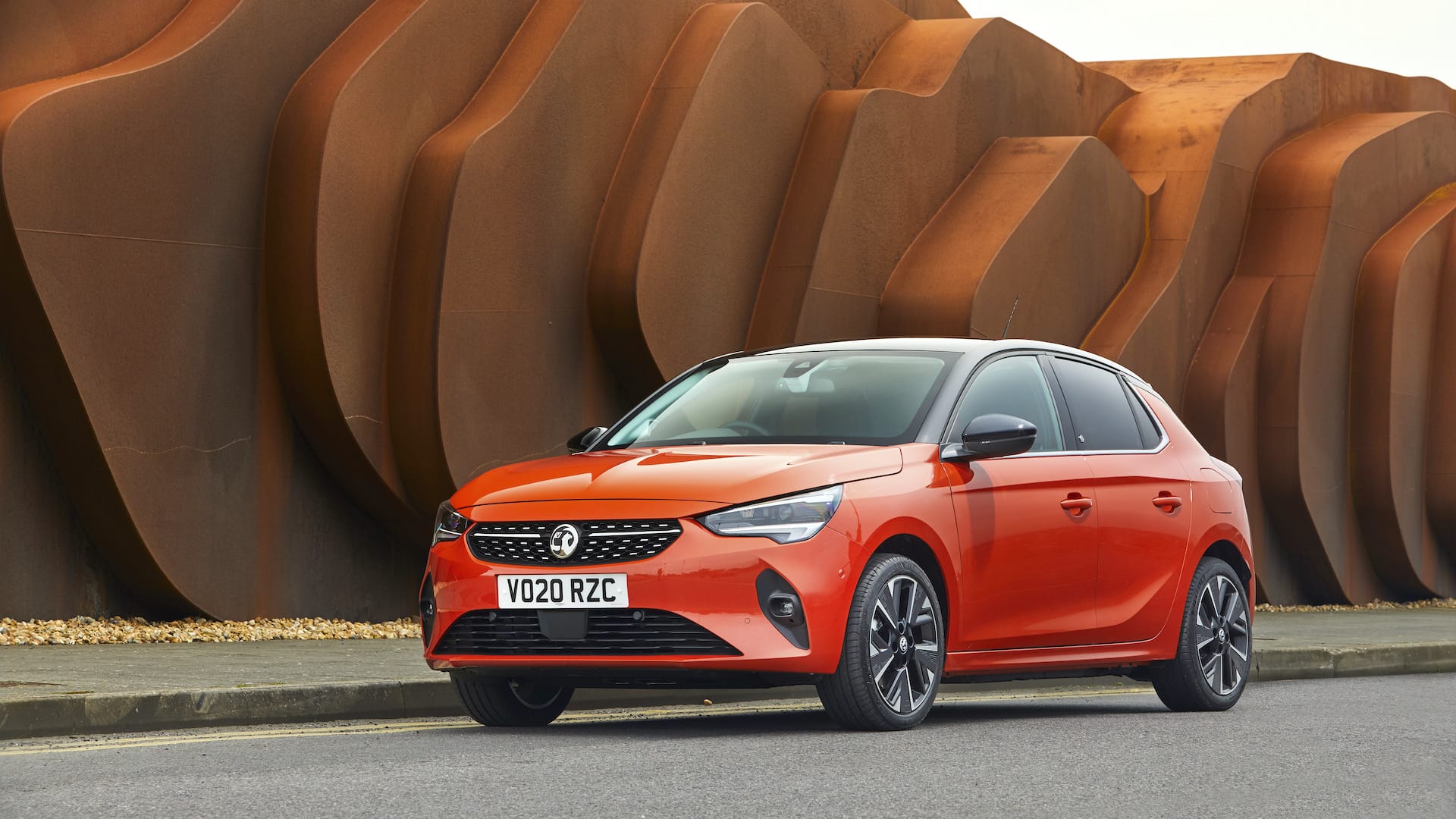
2019 Vauxhall Corsa-e
© VauxhallAnother way the new Corsa benefited from the use of the Groupe PSA platform was the ability to offer an electric version.
Vauxhall hopes that one-in-10 of all new Corsa sales will be the electric Corsa-e, and it appears almost identical to the combustion version. Only different alloy wheel designs, plus the lack of an exhaust pipe, give the game away.
-
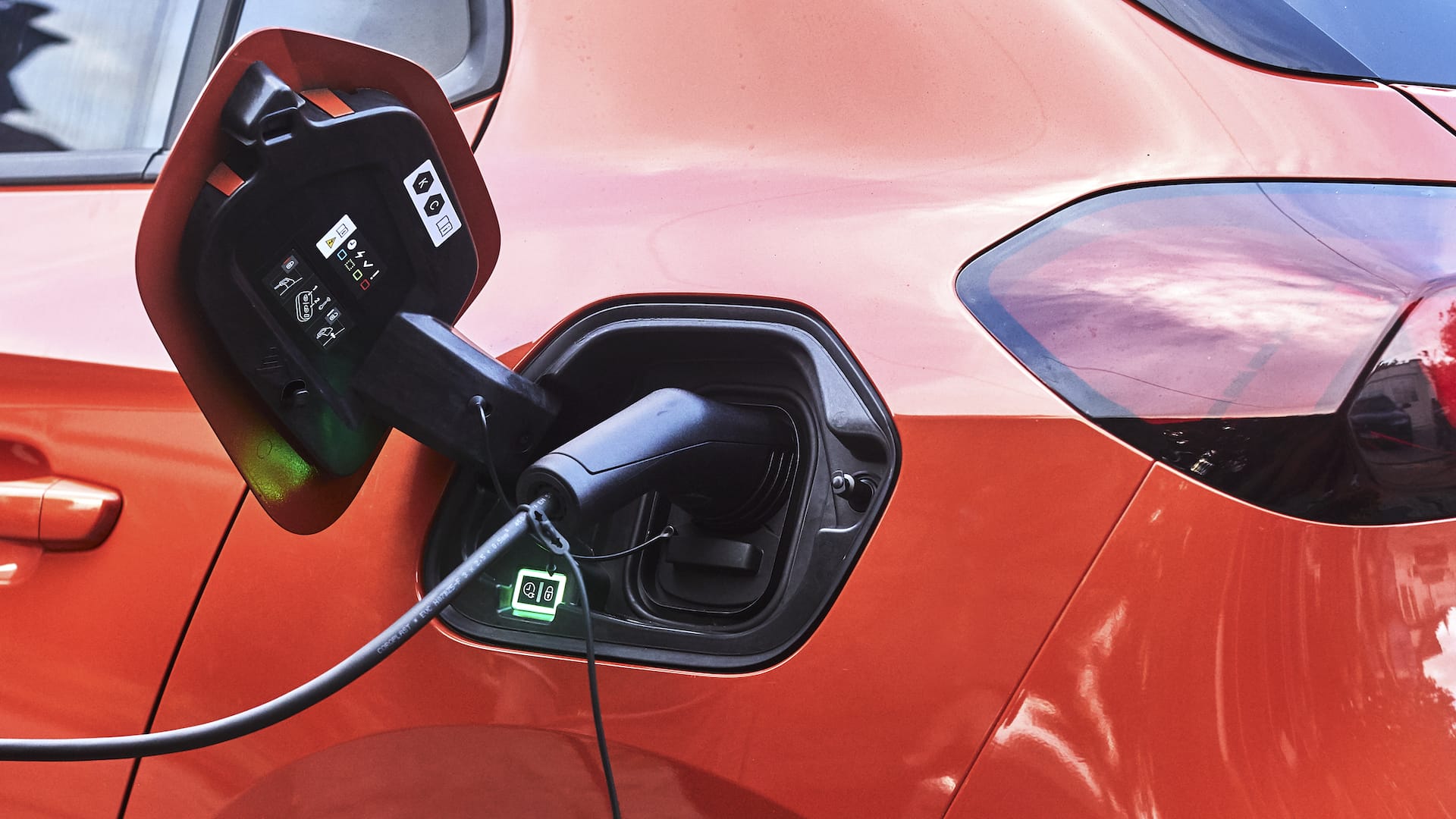
2019 Vauxhall Corsa-e
© VauxhallThe Corsa-e uses a 50kWh lithium-ion battery that powers a 100kW electric motor. This is the same drivetrain as found in the Peugeot e-208, with the ability to accelerate from 0-62mph in 8.1 seconds. Fully charged, the Corsa-e has an official range of up to 209 miles.
It has also proven popular with buyers, with more than 5,600 sold in the UK during 2021.
-
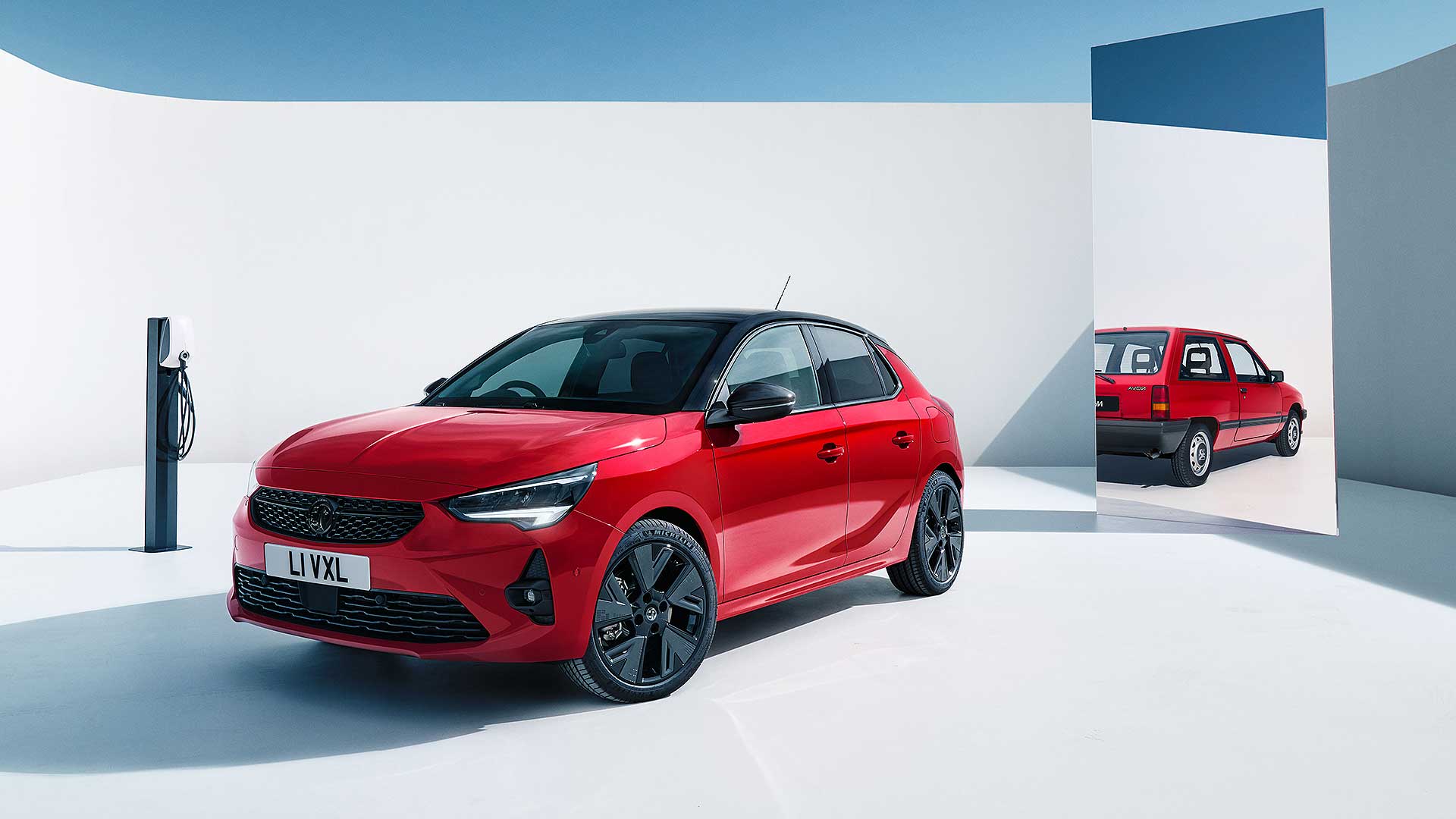
2022 Vauxhall Corsa Anniversary
© VauxhallTo mark 40 years of the Nova and Corsa, Vauxhall has launched a special Corsa-e Anniversary Edition. Limited to just 1,000 cars, each of the electric models will be sold online, at a price of £31,000.
-
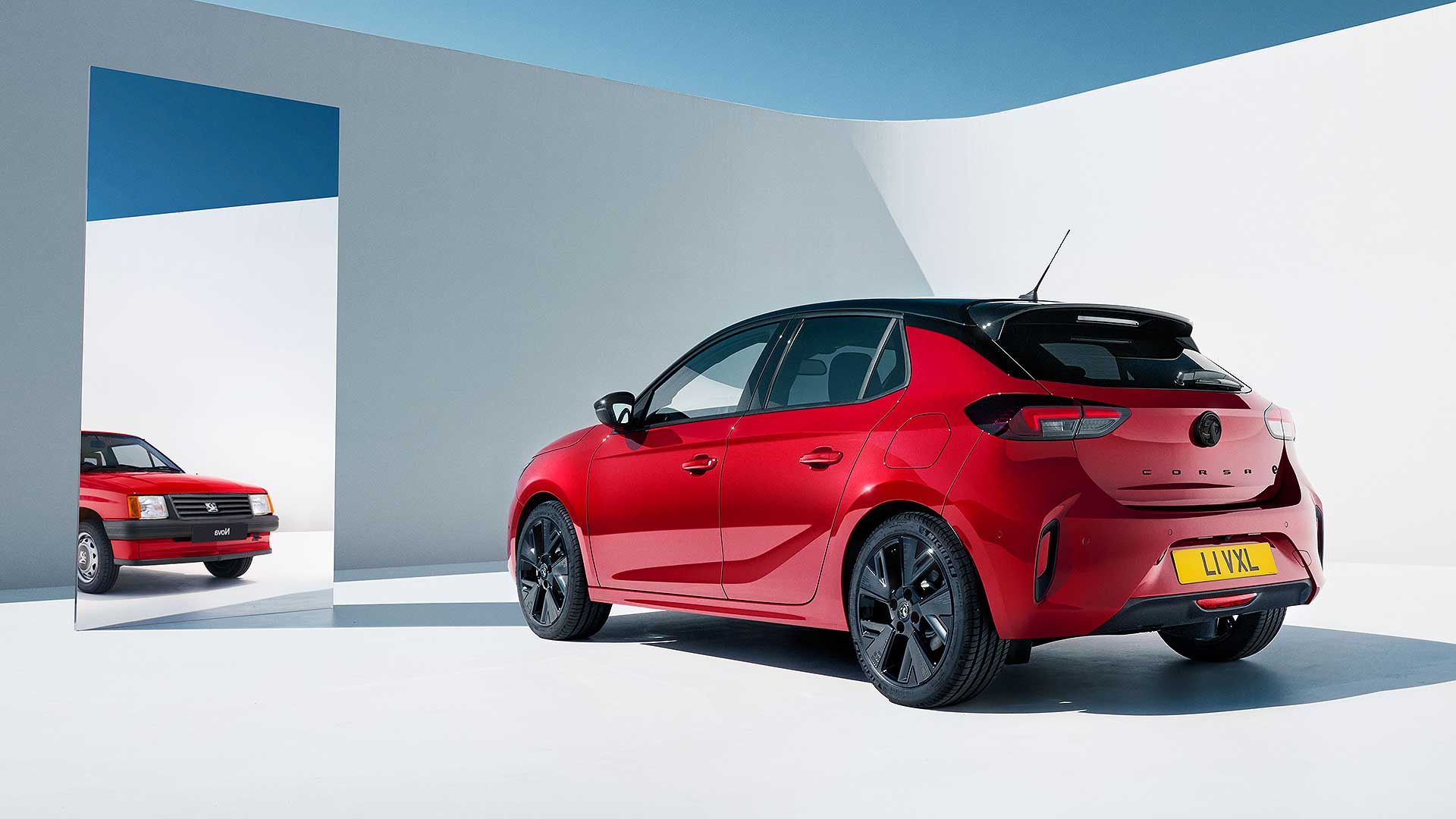
2022 Vauxhall Corsa Anniversary
© VauxhallThe Corsa-e Anniversary Edition features Record Red paint, inspired by the Nova’s original Carmine Red hue. Detailing on the outside includes black lettering for the Corsa script on the tailgate – bringing it in line with newer Vauxhalls such as the latest Astra.
-
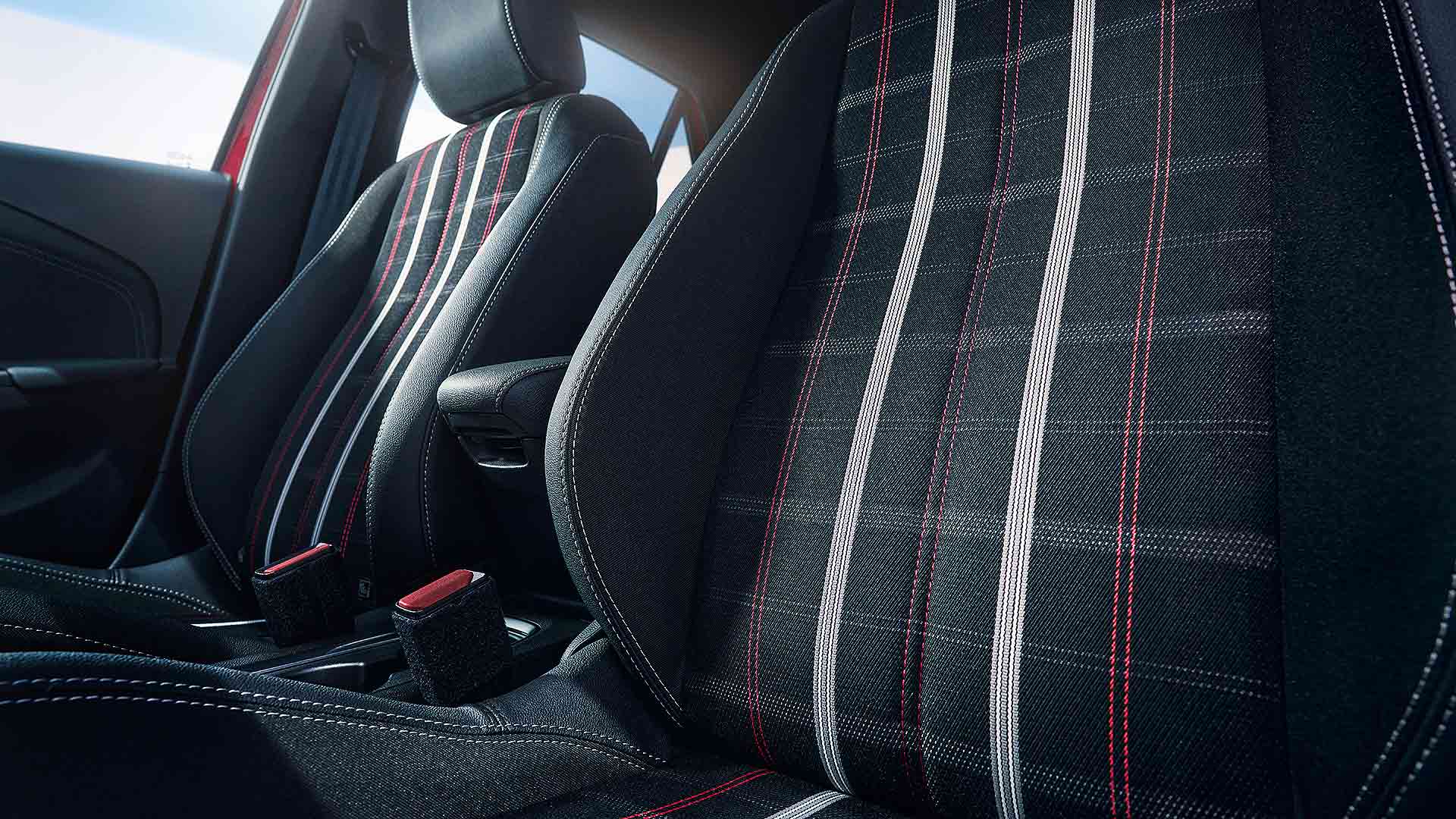
2022 Vauxhall Corsa Anniversary
© VauxhallIn a neat touch, Vauxhall has also created a new type of tartan upholstery for the sports seats, inspired by the Nova SR. All Corsa-e Anniversary Edition buyers even get a special boxed set of collectors’ socks, finished in both the original tartan and the 2022 reinterpretation.